
- Oct 25, 2022

Personal Narrative Writing in Middle School: Digging Deeper
Updated: Oct 25, 2022

For years, I didn't do personal narrative writing in middle school. In fact, I wrote an entire blog post about why I didn't do it . Main reason...it's been done before in many years prior to when those students came to you, especially if teachers prior use writing workshop.
However, I've grown to embrace it again. The biggest reason why is because I think it helps build a classroom community. I decided to go with personal narrative instead of my usual fiction writing in response to reading during the pandemic. I felt, since the kids were remote, this was a good way to get to know each other a little better.
I did peruse Lucy Calkins' Personal Narrative unit for the digital notebook, however, as I went through the unit, I changed a lot.
I like to have the students do a quick narrative based on a person in their lives . The idea of writing about a special moment with a person has been done a lot up until this point so I feel it's an easy way to get a sense of where they are. I have them start with listing moments with an important person. They pick one of those moments to write about.

I don't necessarily need an entire story; I just want them to show me what they can do.
Getting Started
If you don't know already, a personal narrative focuses on a small moment , not an entire day, trip, game, etc. In the earlier grades, teachers spend a lot of time on this (think less watermelon, more seed). At this point, I feel that students just need a refresher.
I like to do this through mentor texts . I provide students with actual written student narratives from my past students. (Here are two you can use. These are by actual students, so definitely not perfect examples. Student Narrative #1 and Student Narrative #2 ).
Students go in to highlight specifically the small moment components of the stories. We discuss how these stories are small moments (or not) and they also start analyzing what the stories did well (or not).
I think it is super valuable to see other students' stories to give students perspective of what's expected or what can be improved.

Brainstorming
Students begin to brainstorm by thinking of a place that is important to them. I tell them to be as specific as possible.
Their idea may be big, but then they make a map of the place. The map is more focused on the moments that happened in the place. They then pick one of those moments in the place and write long about it.

Next, I have students write about moments that mattered. For this, I like to do Show and Tell . I tell students a few days before to bring in an item that is important to them. This should symbolize something or someone that is important in their lives. This goes so well! It goes beyond just what the objects are, but also what they can represent.
They use that object to brainstorm ideas within the topics of "first times", "last times", and "moments I learned something" . For example, I showed a picture of my husband and me at my brother's wedding. This was important to me because it was the first time I had left my son with another babysitter. I was dealing with post-partum anxiety. This stemmed lots of ideas: first time I left my son with a babysitter, first time I had an anxiety attack, the LAST time I had an anxiety attack, the first time I changed a diaper, the moment I learned it's important to enjoy small things, etc.

I start with students focusing on story structure . I have them look at short stories to do this. I really like "Eleven" and "Fish Cheeks". They are short and sweet and are great models for personal narrative.
They fill out the chart for those stories. We discuss, then they plan their own stories on a story structure chart.
The next day we focus on internal and external . This is something we cover in our unit prior. I do a Deep Study of Character before this and we often get into internal and external characteristics of characters. For writing, they focus on what they could be thinking (internal) in each part of their chart and what they could be doing (external) in each part.
Like everything else, we look at short stories first to see how these mentor authors do the same.

Before getting into the actual writing, I spend a day on Show Don't Tell . There are so many things you can do with this, but here's how I do it .
I usually break down each part of the story structure chart by day. So, I will do exposition one day, rising action another, etc. I will start each day with them looking at mentor expositions, etc. Each year, I've done different things. I also share MY PERSONAL NARRATIVE. This is so important; you HAVE to write what the students are expected to write .
A few things I've done:
I would share a Doc with a page or two out of a shared read aloud. I'd give them specific questions that focus on that part of the story map; for example, "how did Jason Reynolds introduce the characters in this chapter?".
I'd have them go back into whatever books they are reading and answer similar questions ("how did the author introduce setting/problem/solution?" "how did the author show feelings/thoughts/actions?").
I always share with them MY exposition, rising action, etc. Sometimes I just read it to them, other times I have them work with partners to look for similar things mentioned in the bullets before this.

It's important to look at mentors. I don't just have them go and write the whole story in a day. It's so important to break it up.
There are so many different lessons you can do. I always have to remind myself that you don't have to teach them EVERY thing. I try to keep revision pretty straightforward.
Of course, there is editing; focusing on grammar, punctuation, spelling. I like to tie in anything I do with mentor sentences or vocabulary . It's a good idea to connect it to anything you do for grammar or word study.
Four major areas of revision as per the Lucy Calkins' unit:
Looking at mentor sentences and trying it out with their own writing.
Finding the heart of the story.
Stretching out scenes (finding a moment that can use more detail and stretching it).
Slowing down the problem scene.

I don't always commit to these exactly. I do like to spend time on dialogue and elaboration . I really get into how important it is to punctuate it properly and how to tag it so it shows more description.
I also revisit their showing and not telling slides and have them apply it to their writing.
One of the very last things I do in the revision stage is have them do critique groups . This is a bit different than just them swapping Docs with each other and commenting. It's more of a dialogue.

Lastly, they finalize their draft and put it on a Padlet . This is used for lots of things. Guardians are able to see their writing. They can see each other's writing. And I have a spot with ALL of their stories.
Bottom Line
While personal narrative has been done, there is always room to grow. I really feel it depends on the group you have. It's a nice way to start the year to get to know each other. I usually spend about a month on the entire unit.
Click below to get my digital notebook for the unit!

************
Want a custom bundle from me click below.

Teachers Pay Teachers Store

Recent Posts
Spring Things! Fun with Poetry and Figurative Language
Text Structure Explanatory Writing: Creating a Dodecahedron
Online Research, Note-Taking, & Argument Essay: Student Choice Driven

- About Michelle Waters
- Curriculum Vitae
- Tools I Use
- Podcast Episodes
- How To Be Our Podcast Guest
- Member Login
- Member Helpdesk
- Support Portal
- Resource Partners
- Writing Partners
- Certificate Verification
- How To Contribute
by Michelle Boyd Waters, M.Ed.
A Plethora Of Writing Examples For Middle School (& High School)
October 14, 2014 in Pedagogy
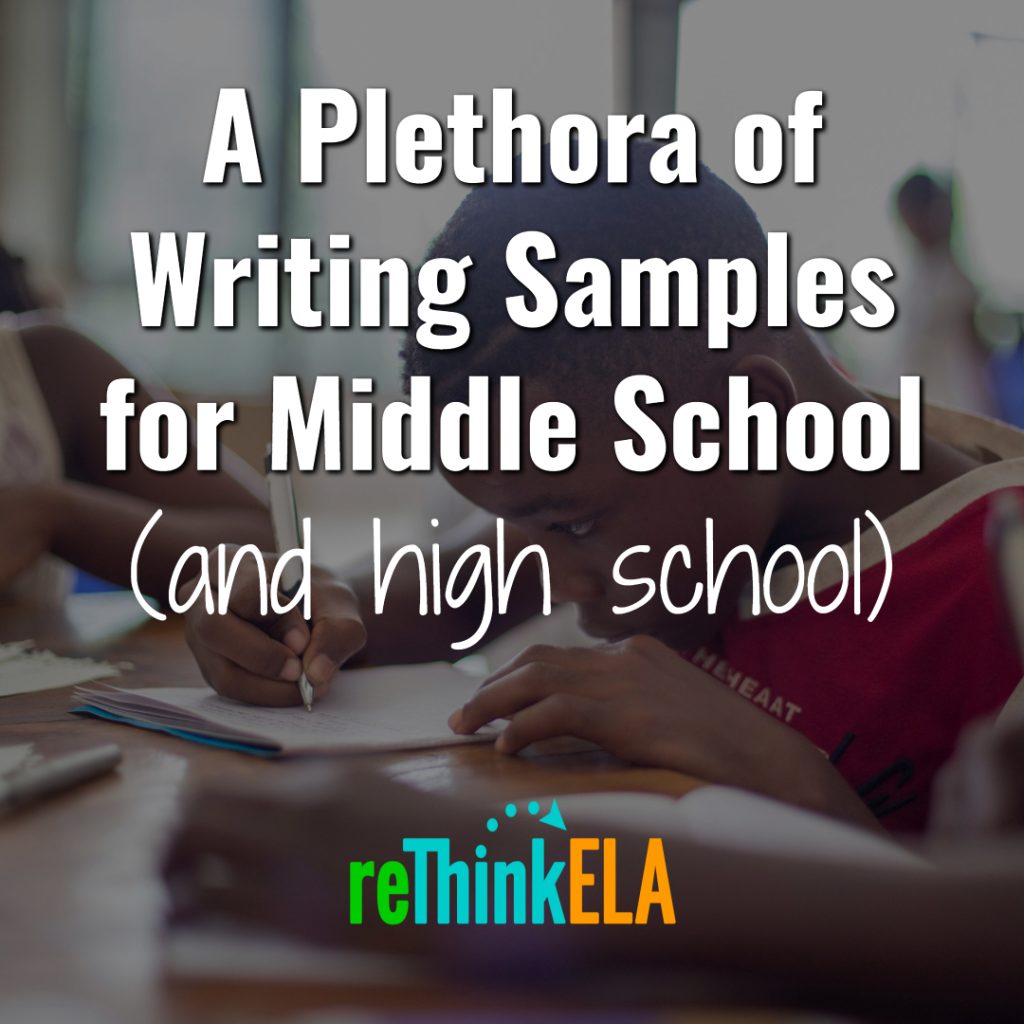
When I started my first job as a professional newspaper reporter (This job also served as an internship during my junior year in college — I just didn’t leave for about 6 years.), I quickly realized that all my experience, and all my years of journalism education had not been enough to help me write stories about drug busts, fatal car accidents and tornadoes. All the theoretical work I’d done, and all of the nifty little scholastic and collegiate stories I had done, did not prepare me for real world writing.
At that point, I had to find a solution quickly. After all, I had a deadline to meet, and it was only a few hours away.
One of my colleagues, who also served as a mentor, had the solution. She introduced me to the newspaper’s “morgue.” This was a room filled with filing cabinets in which we kept old — dead — stories arranged by reporter. Whenever I wasn’t’ sure how to write a story, all I had to do was check the morgue for similar stories. If I needed to write a story about a local drug bust, for example, I’d find another story on a similar incident, study its structure, and mentally create a formula in which to plugin the information I’d gathered.
Once I’d gained more experience, and had internalized the formula for that particular type of story, I felt free to branch out as the situation — and my training — warranted.
I do the same thing when I want to write a type of letter, brochure, or report that I’ve never written before.
This is what writing looks like in the real world.
Of course, if you’re a new teacher like me, there is one problem with providing mentor texts to my students: I have a dearth of middle school level writing sitting around in my file cabinets.
Fortunately, the Internet is full of sources, so I scoured the bowels of Google to find examples. I know how busy you are, so I’m sharing.
Expository writing examples for middle school
Below are several sources of expository writing samples for middle school students.
- The Write Source Expository Writing Samples
- Holt, Rinehart, Winston Expository Essay Models
Finally, here is an article in the New York Times that will help you teach your students real-world expository writing skills .
Descriptive writing examples for middle school
- Descriptive Writing Samples from Novels
- Milwaukee Public Schools Descriptive Essay Samples (p. 137)
- Holt, Rinehart, Winston Descriptive Essay Models
Narrative writing examples for middle school
- Writing Samples by Steve Peha (PDF)
- The Write Source Narrative Writing Samples
- Oregon Department of Education Scored Writing Samples (Ideas and Organization)
- Oregon Department of Education Scored Writing Samples (Sentence Fluency and Conventions)
- Oregon Department of Education Scored Writing Samples (Voice and Word Choice)
- Oregon Department of Education High School Scored Narrative and Argumentative Writing Samples
- Holt, Rinehart, Winston Narrative Essay Models
Argumentative/persuasive writing examples for middle school
- The Write Source Persuasive Writing Samples
- Holt, Rinehart, Winston Persuasive Essay Models
Reflective writing examples for middle school
- Reflective essay examples from Lake Washington Girls Middle School
If you know of any other online writing example sources, please feel free to share them in the comments below.
Related topics: Argumentative Writing , Informative Writing , Mentor Texts , Narrative Writing
About the author
Michelle Boyd Waters, M.Ed.
I am a secondary English Language Arts teacher, a University of Oklahoma student working on my doctorate in Instructional Leadership and Academic Curriculum with an concentration in English Education and co-Editor of the Oklahoma English Journal. I am constantly seeking ways to amplify students' voices and choices.
This is very, very helpful. Thank you for sharing!
As a new middle school teacher (coming from elementary) this was very helpful and encouraging.
Thank you very much for letting me know. I’m glad that I was able to help you!
Thank you! I’m glad I can help.
Your welcome
This is super helpful. Thank you!
These links are a fantastic help. Thank you!
This helped me BUNCHES! Thanks so much!
thanks so much!!!!!!!!!!!!!!!!!!!!!!!!!!!!!!!!!!!!!!!!!!!!!!!!!!!!!!!!!!!!!!!!!!!!!! XD
These links are now dead 🙁
Thank you for notifying me! I have updated the post to include new (live!) links. Some of them are geared towards high school, but I think we can still use them as exemplars of what we want our students to aim for.
Comments are closed.
PRESTO PLANS

prestO PLANS
ENGLISH TEACHER RESOURCES
Sent straight to your inbox
CLICK HERE TO ACCESS
Sign up to receive 10 ready-to-use ELA resources your students will love!
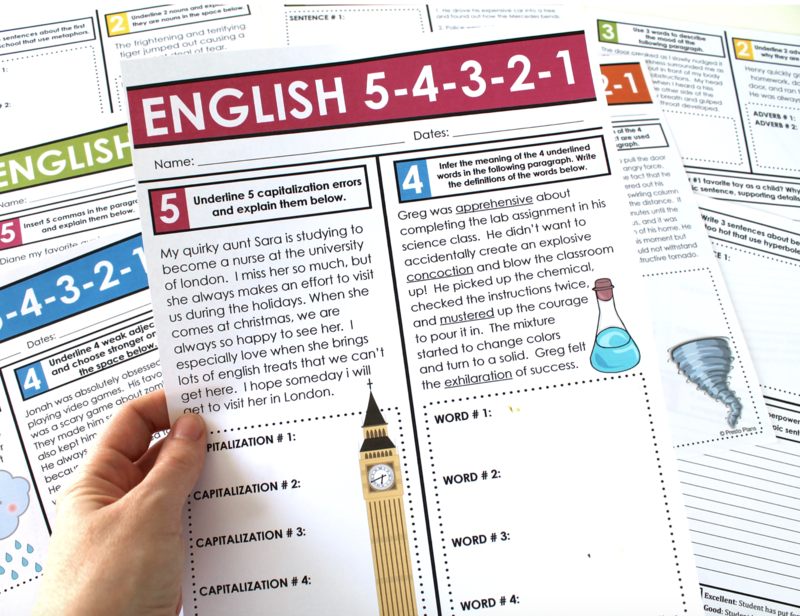
10 FREE ELA RESOURCES
Teaching Students How to Annotate Poetry
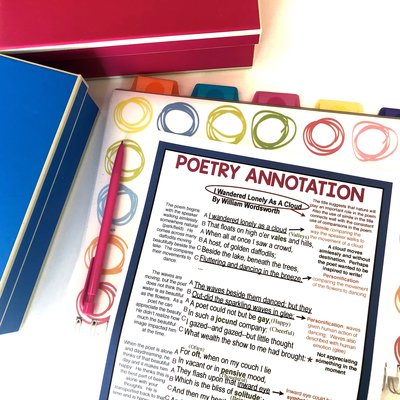
8 Ways Teachers Can Celebrate Student Success
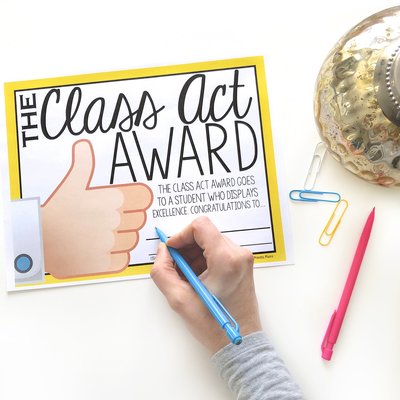
Bulletin Board Ideas for Middle & High School English
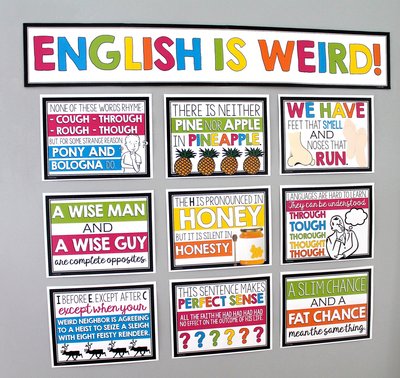
ON THE BLOG
teacher favorites
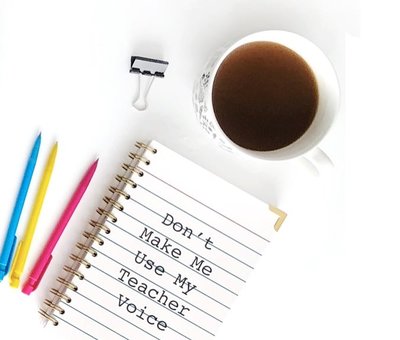
an ELA facebook community
TEACHERS' LOUNGE
join us in the
Engage your students as soon as they walk into your classroom with my best-selling, full-year bell-ringer set. Each day includes a unique and creative task. Topics include grammar, vocabulary, writing, and figurative language.
Full Year of English Bell-Ringers (Vol 3)
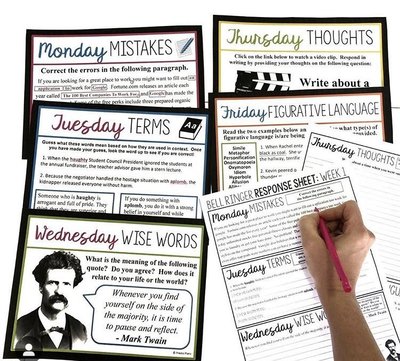
teacher resource
Top categories, i'm bonnie from presto plans.
I’m a curriculum writer, literacy educator, and all around book lover with a passion for helping English teachers engage their students with creative, high-quality resources. My mission? To make teaching English a whole lot easier for you, teacher friend!
Hello, Teachers!
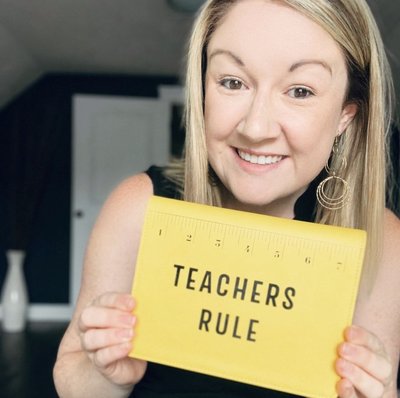
10 Tips for Teaching Personal Narrative Writing in Middle School ELA
One of my favorite middle school ELA writing activities for the beginning of the school year is a personal narrative essay . I find this assignment is a great way for us to learn a lot about who our students are – as writers, and as people! It’s a great way to build foundational relationships with new students and set everyone up for a positive year!
Here’s how I like to set up personal narrative essay writing in the classroom:
1. Teach about the Genre
To begin, I like to explore the idea of personal narrative writing . While many of our middle school ELA students have written other types of essays before, this is often the first time they encounter this the personal narrative writing genre. First, I like to ask students if they have ever heard of personal essays and guide a brief class discussion.
Personal narratives create a valuable opportunity for students to share relevant stories from their own lives. Usually, this type of writing is designed to provoke an emotional reaction. Often, they find that personal narratives can be one of the most enjoyable writing assignments in ELA class!
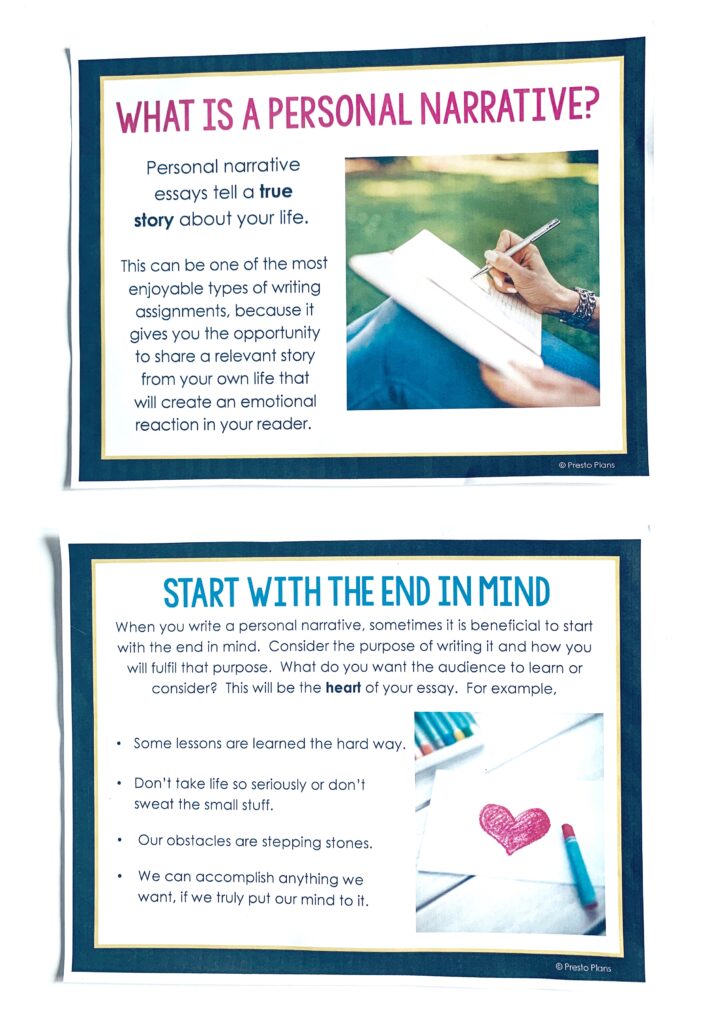
2. Help them Choose a Topic
I find that one of our students’ biggest roadblocks to writing a personal narrative essay is the fact they think they don’t have anything worthwhile to say!
When this inevitably happens, I like to remind them that personal narratives can encompass a broad range of topics. As they plan their writing, they can choose to write about a single event, or an overall experience. For example, they might like to highlight on a moment in time. Alternatively, they could focus on a single thing that spanned a number of years (developing a skill at swimming lessons or dance class, for example). Even the simplest story can make an excellent topic for a personal narrative essay, as long as it is presented in a powerful way.
I also like to emphasize that the most important part of a personal narrative is that the writing has a purpose. For example:
- A funny story might enlighten readers on a lesson learned the hard way.
- A scary story might serve as a warning or wake up call.
- A touching story might inspire others to be a better person or view the world from a different perspective.
Sometimes I even like to share one of my favorite quotes. The saying (which is often attributed to the Dalai Lama) goes, “If you think you’re too small to make a difference, try sleeping with a mosquito!” This usually reassures our middle school ELA students that we all have the ability to make a powerful impact!
If they are stuck…
If the class still seems stuck on choosing a topic, I like to set stations up around the room and break students into small groups. Next, I provide them with task card prompts at each station to get them thinking about their various life experiences that might make a good topic for a personal narrative essay.
When they arrive at each station, they read the card. Each member of the group briefly shares a story that relates to the prompt, and students take a few minutes to jot down a few possible ideas on their brainstorming sheet. As they move through the stations and repeat the process, they should generate a number of different ideas to consider.
When their sheet is full, I invite them to narrow down their choices by considering their answers to the following questions:
- What are you most inspired by or excited to write about?
- What might be the most interesting for others to read?
- Which topic can be told with a clear series of events and interesting details or enticing descriptions?
- Which story has a thought-provoking message or point?
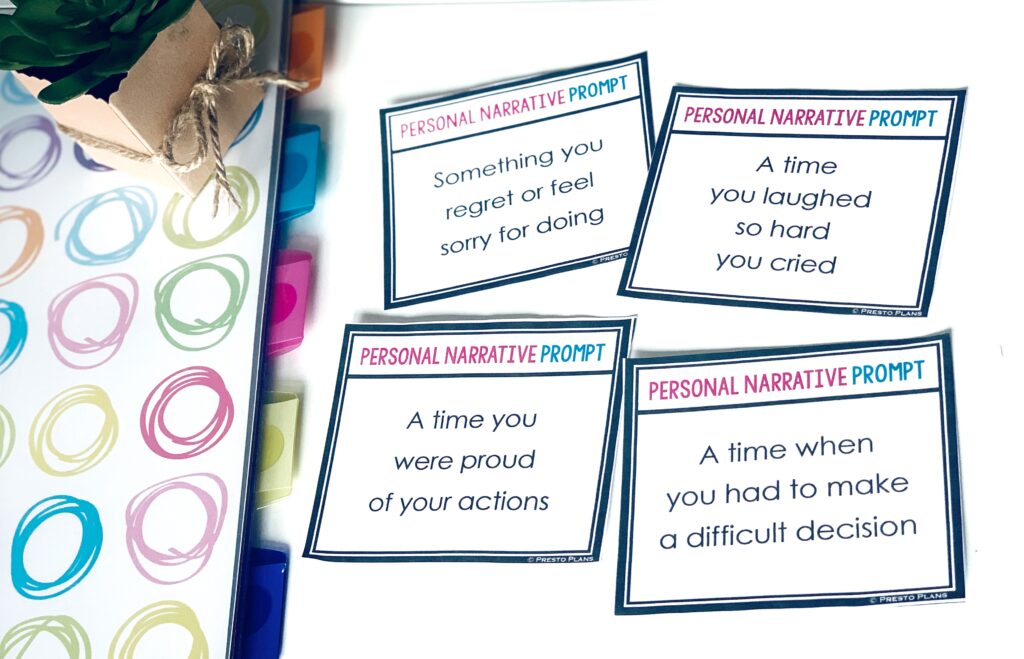
3. Share Two Important Questions
As the class works through the brainstorming process, they need to also consider the fact that personal narrative essays are meant to be shared with others. I will read their work when I grade it, of course, and I also like to share and display students’ writing around my classroom.
With this in mind, I like to invite students to consider two questions before they get too deep into their initial draft:
- Am I comfortable sharing this story with others?
- Will people be able to relate to my experiences and what I learned?
When thinking about these questions, if the student cannot respond with an enthusiastic “yes” to both, it is time to go back to the brainstorming sheet and choose a different topic. But if their topic passes this important self-check, they can keep going!
4. Start With the End in Mind
Now, it’s time for students to step back and consider the purpose of their writing. In this section of the lesson , I encourage the middle school ELA class to think about the “heart” of the story. In other words, what do they want the audience to notice and consider as they read?
This is also an opportunity for students to consider their own purpose for writing. Some questions I like to ask are:
- Why do you want to share this story?
- What do you want people to feel as they read your personal narrative essay?
- What should the lasting impression of this story be on your reader?
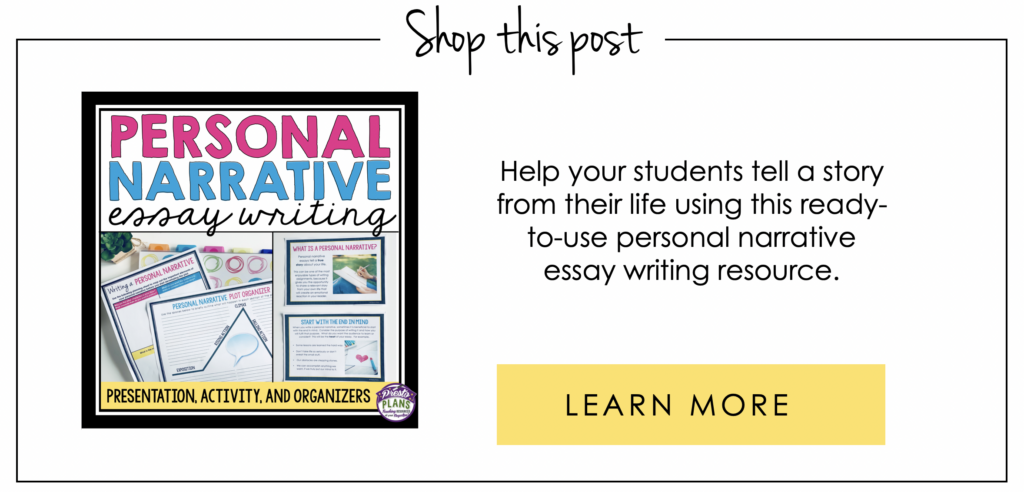
5. Consider Your Audience
As part of the pre-planning process, I also like to remind middle schoolers of who their audience for this task will be. After all, personal stories should be shared with others!
I find that sometimes students approach an assignment from a different perspective depending on who will be reading their written work. This is why I like to make it very clear about the audience for their finished writing upfront.
There are many options for sharing students’ written work. Sometimes, after the essays are written, I have students sit and read them aloud to small groups of their peers. I also usually invite them to include their personal narratives in their portfolio of work from the year, which can be accessed by parents and guardians through an online portal. I may also keep a copy of their personal narratives to share with families during student-led conferences.
In some cases, a conversation with students about how they would like their words and ideas to be shared can be useful. They may surprise you with their own ideas. For example, they might like to post excerpts from their personal narratives to a blog, or even make them into a podcast!
6. Plan Out Your Story Elements
Once you have addressed the issues of topic and audience, it’s time to consider the elements of a personal narrative.
Characters:
I like to emphasize that while the writer is the main character, a personal narrative essay usually involves other characters as well. When preparing to write, I invite students to consider:
- Who else is involved in the story or event?
- What are their character traits, and how will you show them through your writing?
- What is your relationship like with this person (or people?)
Once the characters are established, a next step for students is to consider the setting. For example, if location is important to the story, I might ask the class how they will convey a sense of place.
Here, I find it helps to brainstorm sensory details to include. I like to ask the class about the weather, time of day, sounds (for example, birds chirping, crowds, rain on the roof) and other details. These can help add color to the overall scene.
During the lesson , I like to explain that most personal narratives include one of the four types of conflict. This is sometimes new information for my middle school ELA students! I find it helps to ask the following questions:
- Is there conflict between you and another person in the story? (person vs. person)
- Are you struggling with some type of inner turmoil or struggling to make a decision? (person vs. self)
- Are you in conflict with the natural elements? (person vs. environment)
- Are you challenging an element of government or society? (person vs. society)
7. Provide an Organizational Framework
As we discuss the organizational framework of a personal narrative essay, middle school ELA students usually notice similarities to traditional story writing. During this process, a graphic organizer can support them with their planning.
Planning the Beginning of the Essay:
I remind them that the beginning of their essay should provide a captivating hook, establishing the basic details of the story. This can include background information, as well as information about the characters and setting. Most importantly, I like to reinforce that this is where they need to establish themselves as the main character! Depending on the topic, the students might introduce the conflict in this section as well.
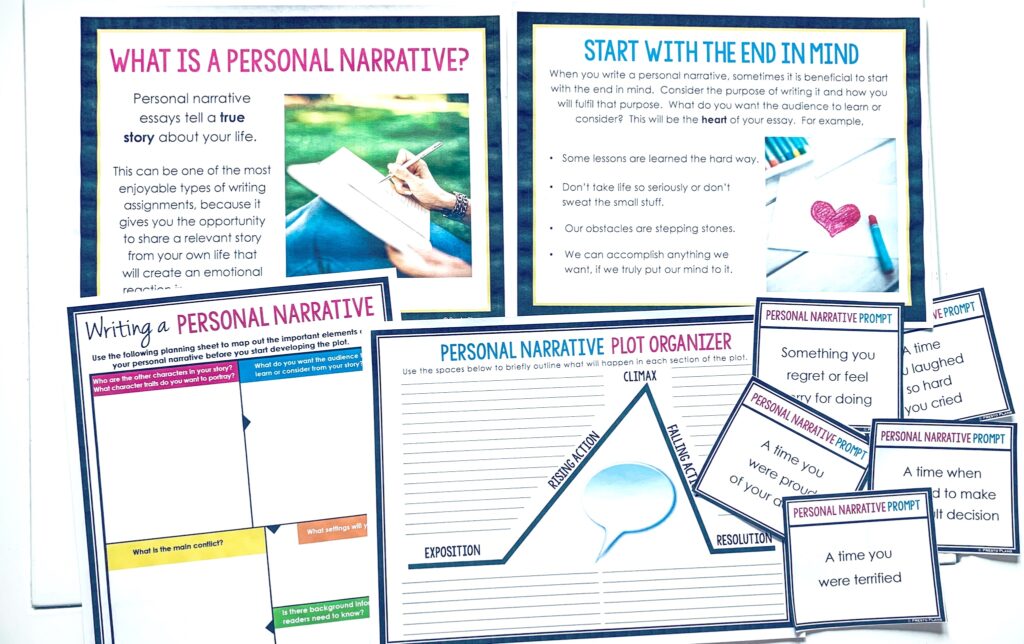
Planning the Middle of the Essay :
As they move on to the middle of the personal narrative, I like to tell middle school ELA students to dive even more deeply into the situation, problem, or event they are describing. This helps their reader connect with the story. To do this, I also like to invite them to consider the character’s experiences (how they were feeling and what they were thinking). Just like in traditional fiction, this is also the place to build to some kind of climax.
Planning the Conclusion of their Essay:
Finally, I have students consider how they plan to conclude their personal narrative writing ELA task. In this section, they will want to tie up any loose ends, and identify any key messages they want to leave with the reader. As they organize their ideas, I ask them to think about a few things:
- What could the reader learn from your experience?
- Is there a moral or lesson the reader might consider in their own life?
- Will your story leave the reader laughing, in tears, or ready to take action?
One thing I emphasize is that students who are unfamiliar with personal narrative writing will probably want to stick quite closely to this planning format at first. As they become more comfortable with this type of writing task, they will gain more confidence in their own style, and take more creative risks.
8. Share Writing Strategies
Now it’s time for the fun part – the writing itself! Before my middle school ELA students write their essays in earnest, I offer a few tips to get them started.
First, I remind them to write their narrative essays in first person. After all, they’re telling their own stories! We discuss the idea of being “true to your voice” as a writer, and consider how the students wish to tell their personal stories. A humorous, witty, inspiring or sad story will all require a different tone – and whatever direction the student chooses to go in, the writing should be consistent.
Next, I like to offer a few tips about engaging the reader . Dialogue can add color and vibrancy to a personal narrative. Vivid imagery and sensory details can show, rather than tell, a sense of place or emotional connection. I love sharing the sample sentence, “Her face flushed to a shocking shade of red.” This is much more effective than, “She was embarrassed.”
9. Allow Time For Peer Editing
In my classroom, I like to leave a period or two for peer editing and revisions at the end of the writing process.
The first time, I encourage ELA students to read their personal narrative writing aloud. Or – even better – they can have a peer read their work back to them. This is a great starting point for finding mistakes or weak spots in the writing that need to be changed. The second time through, students can use a checklist to edit the work in sections and offer suggestions for improvement.
By breaking the editing process down into three key areas (grammar, content, and writing structure), I find students can keep their feedback constructive, focused and efficient. Finally, I leave time for the students to go over their writing again, making spelling and grammar corrections to ensure they turn in their best work.
10. Give Options for Sharing
It’s important to remember that each student has their own personal comfort level about sharing their work with a large group. A brief survey (either on paper or via Google Forms) is a great way to check in on students and find out how they would like to share their writing.
Here are some choices I like to offer:
- sharing their personal narrative essay through a pre-recorded podcast or video
- reading their essay in front of the class
- presenting their work to a small group of their peers
- booking a private meeting with me (usually at lunch) to go through their essay together
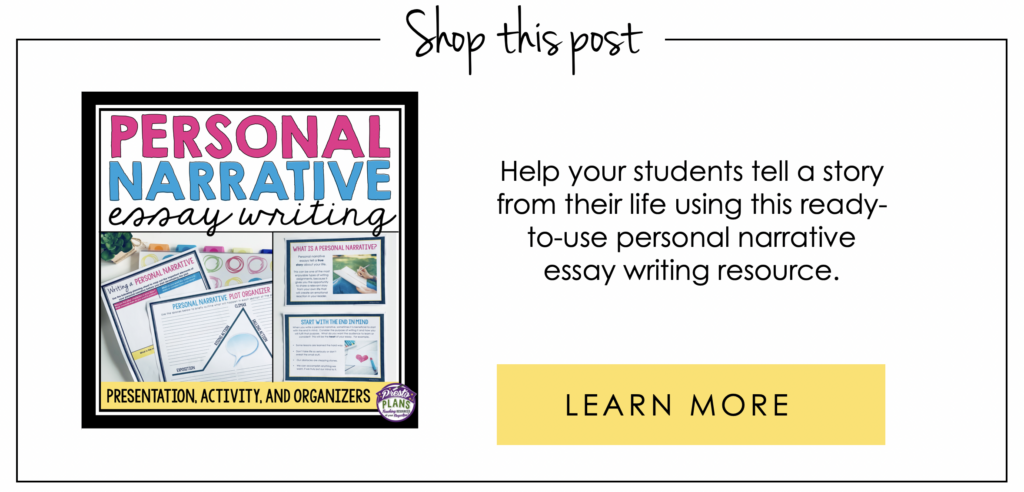
There you have it! I hope your middle school ELA students love writing personal narrative essays as much as mine do!
If you’re looking for more unique writing ideas for middle and high school, check out 5 Outside the Box Creative Writing Assignments in ELA !
Students stuck in a writing rut? Here are 8 Ways to Engage Reluctant Writers .
share this post
VISIT THE BLOG
Snowball writing: collaborative writing activity, 10 ideas to make your teachers’ lounge a positive space.
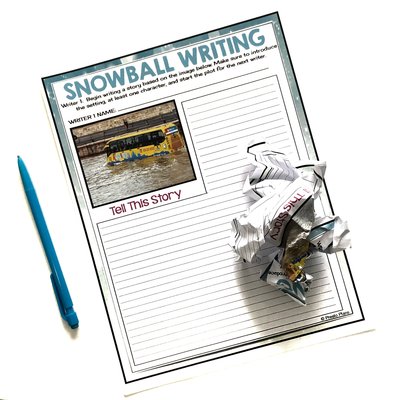
Send students on an online date with a book
7 bell-ringer ideas for middle and high school english.
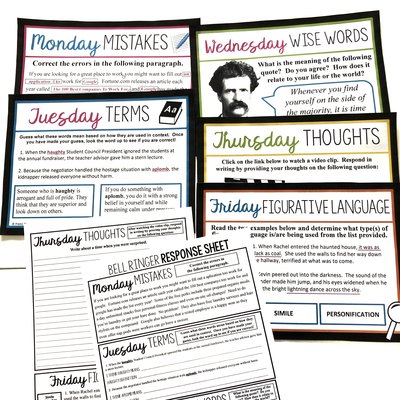
Search the blog for what you are teaching
PRIVACY |
CONTACT |
© PRESTO PLANS |

I’m Bonnie, a curriculum writer, literacy educator, and all around book lover on a mission to make English teachers’ lives a whole lot easier!
resources sent to your inbox!
10 FREE ENGLISH TEACHER
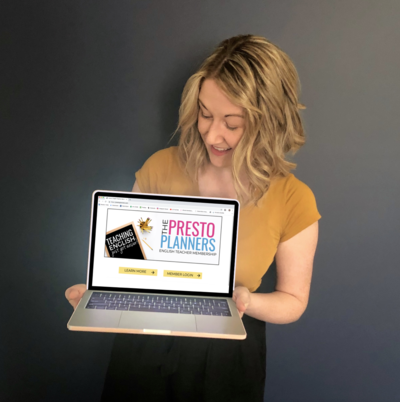
@PRESTOPLANS
FIND ME ON
sent straight to your inbox!

10 days of ELA TEACHER
- Our Mission
A Systematic Approach to Teaching Narrative Writing
Clear strategies for each stage of the writing process help students improve their writing and serve as effective readers for their peers.

“I’ll never forget the colors,” I often read in student reflections.
As a middle school language arts teacher, I’ve developed a systematic approach to writing that helps students improve their storytelling skills. It includes strategies for writing in a variety of genres, such as personal narrative, memoir, and creative nonfiction. And in the revision stage I teach a color-coded approach to analyzing details that helps students see clearly what kinds of details they’ve used—and which they haven’t. Apparently this approach really sticks with my students.
When these strategies are used together, they help students improve their writing skills while also fostering relationships among themselves as they act as sounding boards for each other’s work.
Prewriting Q&A as a Source of New Ideas
Prewriting is an essential part of the writing process. If ideas aren’t flowing, however, some students may become stalled, with a lack of ideas acting as a roadblock for them. To get the ball rolling, I pair students together for prewriting conversations.
To begin, I share one of my own stories to demonstrate the art of storytelling. Next, I give students the opportunity to discuss their own story ideas with a partner. Then, as I walk around listening to their conversations, I’ll pause every now and then and ask a few students whose ideas piqued my interest to share their story ideas aloud with the entire group.
Next, I’ll demonstrate asking a series of questions to the student who is sharing aloud, explaining to the class that this strategy can help them dive deeper as writers. Students will continue their discussions in pairs, eliciting as many details as possible from the storyteller through questioning.
They might ask:
- “How was the narrator feeling at that moment?”
- “What would happen if…”
- “Can you help me picture the character?”
This type of thoughtful questioning helps students visualize the scene more vividly and replaces initial writing jitters with fun and flexibility.
They jot down their ideas with words, pictures, bullets, or anything else that helps them solidify the memories from their spoken stories now that they are ready to prewrite independently.
To See What You’re Writing, Act It Out
Instead of summarizing a whole story from beginning to end, I want students to create a writing piece based on a brief period that includes vivid detail. I’ve found that having students act out a scene helps them grasp this concept.
First, I’ll have students read aloud a few pages from our class book. Then, in small groups, they’ll act out the scene. “Now that you’ve acted it out, how long do you think this moment would have taken in real life?” I’ll ask. There will be a friendly debate. In the end, students will realize that the scene was a moment of time told with meaningful details, whether they said it took 30 seconds or 10 minutes.
Students then deconstruct the scene they just acted out by creating a timeline of key character actions. For example, using pages 9–10 of The Glass Castle , by Jeannette Walls, the scene breakdown might look like this:
- At age 3, Jeannette is standing on a chair cooking hot dogs in the kitchenette and feeding them to her dog.
- Her dress catches on fire, sending flames up her body.
- Jeannette’s mom, painting in the next room, hears her scream and enters the kitchen.
- Mom uses an army surplus blanket to put the fire out.
- Mom, Jeannette, and brother Brian run to the neighbor’s house to get help.
- The neighbor drops her laundry she was hanging on the line and races to take them to the hospital, saying nothing.
Students will then work independently to apply the same strategy to their own ideas, focusing on showing rather than telling the entire story. Students will share their lists with their groups and then act out each other’s ideas.
The following conversation suggestions help students clarify and solidify their ideas.
Beginning, ending, and timing: Where does the heart of this moment start? Where does it end? When one student describes a moment that feels excessively long, the rest of the group suggests methods to shorten it. If a student has a moment that is too short, the group helps to extend it.
Characters: What is each character doing? What’s their motivation? What do they look like? How are they acting?
Setting: Where and when is this taking place? What’s going on around your characters?
Dialogue: What’s being said, how, and by whom?
Internal thinking: What are the characters thinking?
Students are now ready to move on to independent writing and complete a full draft.
Color-Coding Writing as a Detail-Oriented Strategy
Following the drafting phase, I teach students a variety of revising techniques. Every day I introduce a new one—and they’re color-coded to make it easier for students to distinguish between them. We might, for example, focus on character details one day. First, students will find vivid character descriptions they love from the read-aloud or their own independent reading. Then, they’ll add their own character descriptions to their writing, highlighting them in a particular color.
I encourage students to incorporate each color throughout their drafts. If character details are represented by blue, for example, blue highlighting should be used in the beginning, middle, and end of their pieces. Other color-coded strategies include setting details, figurative language, sensory details, dialogue, and internal thinking.
The use of assorted colors allows students to clearly see areas that have been enriched with vivid details and areas that have not. This visual strategy benefits learners of all levels by instilling confidence and a sense of accomplishment as rainbows of color emerge throughout their work.
This color-coding approach also aids in peer editing and teacher conferencing by encouraging meaningful conversations like this: “I see you’ve developed thoughtfully crafted blues in the beginning to describe the Mom character. How can you assist readers in picturing and getting to know your other characters? How can you incorporate more blues later to describe them?”
To showcase daily accomplishments, students add their favorite highlighted lines to the classroom bulletin boards. While students could easily copy and paste their examples into a shared class Google Doc, I’ve found that they’re more engaged when there’s movement and camaraderie, and they like having their words physically present in the classroom.
Recently I taped a piece of bulletin board paper for students to write on in the front of the classroom and another in the back. A student was waiting patiently for others to finish at the front. I encouraged him to go write his favorite line in the back since there was no wait and it offered more space to write.
“No thanks,” he chirped. “I want everyone to see mine when they walk into the room.”
A Step-by-Step Plan for Teaching Narrative Writing
July 29, 2018
Can't find what you are looking for? Contact Us
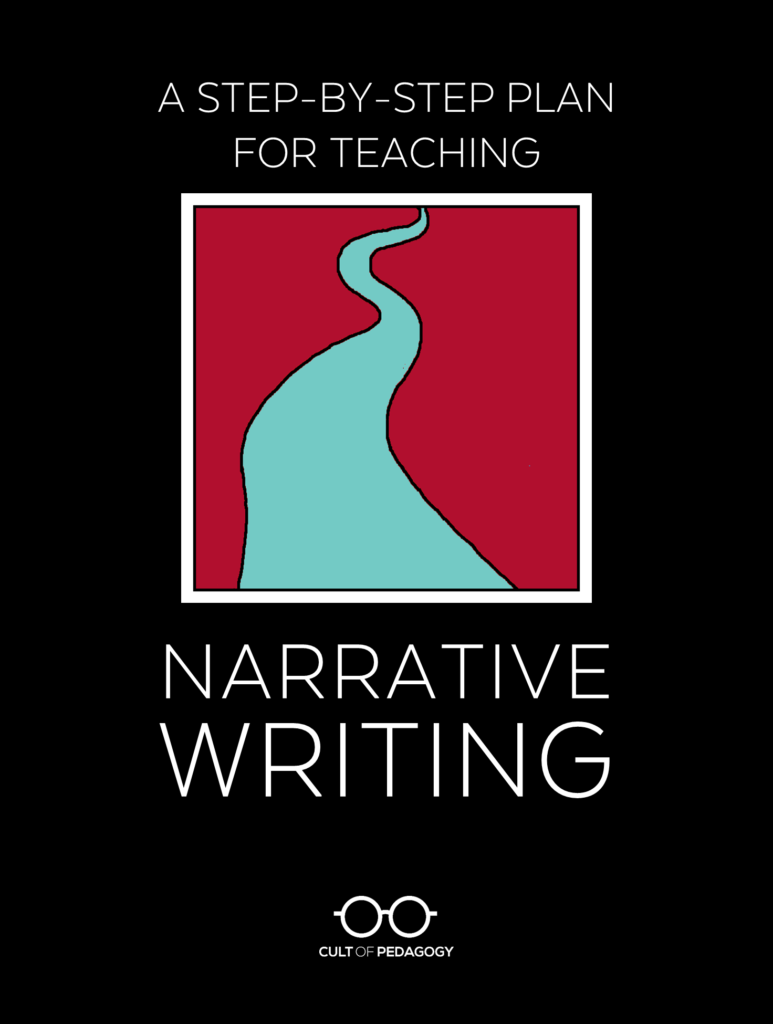
Listen to this post as a podcast:
Sponsored by Peergrade and Microsoft Class Notebook
This post contains Amazon Affiliate links. When you make a purchase through these links, Cult of Pedagogy gets a small percentage of the sale at no extra cost to you.
“Those who tell the stories rule the world.” This proverb, attributed to the Hopi Indians, is one I wish I’d known a long time ago, because I would have used it when teaching my students the craft of storytelling. With a well-told story we can help a person see things in an entirely new way. We can forge new relationships and strengthen the ones we already have. We can change a law, inspire a movement, make people care fiercely about things they’d never given a passing thought.
But when we study storytelling with our students, we forget all that. Or at least I did. When my students asked why we read novels and stories, and why we wrote personal narratives and fiction, my defense was pretty lame: I probably said something about the importance of having a shared body of knowledge, or about the enjoyment of losing yourself in a book, or about the benefits of having writing skills in general.
I forgot to talk about the power of story. I didn’t bother to tell them that the ability to tell a captivating story is one of the things that makes human beings extraordinary. It’s how we connect to each other. It’s something to celebrate, to study, to perfect. If we’re going to talk about how to teach students to write stories, we should start by thinking about why we tell stories at all . If we can pass that on to our students, then we will be going beyond a school assignment; we will be doing something transcendent.
Now. How do we get them to write those stories? I’m going to share the process I used for teaching narrative writing. I used this process with middle school students, but it would work with most age groups.
A Note About Form: Personal Narrative or Short Story?
When teaching narrative writing, many teachers separate personal narratives from short stories. In my own classroom, I tended to avoid having my students write short stories because personal narratives were more accessible. I could usually get students to write about something that really happened, while it was more challenging to get them to make something up from scratch.
In the “real” world of writers, though, the main thing that separates memoir from fiction is labeling: A writer might base a novel heavily on personal experiences, but write it all in third person and change the names of characters to protect the identities of people in real life. Another writer might create a short story in first person that reads like a personal narrative, but is entirely fictional. Just last weekend my husband and I watched the movie Lion and were glued to the screen the whole time, knowing it was based on a true story. James Frey’s book A Million Little Pieces sold millions of copies as a memoir but was later found to contain more than a little bit of fiction. Then there are unique books like Curtis Sittenfeld’s brilliant novel American Wife , based heavily on the early life of Laura Bush but written in first person, with fictional names and settings, and labeled as a work of fiction. The line between fact and fiction has always been really, really blurry, but the common thread running through all of it is good storytelling.
With that in mind, the process for teaching narrative writing can be exactly the same for writing personal narratives or short stories; it’s the same skill set. So if you think your students can handle the freedom, you might decide to let them choose personal narrative or fiction for a narrative writing assignment, or simply tell them that whether the story is true doesn’t matter, as long as they are telling a good story and they are not trying to pass off a fictional story as fact.
Here are some examples of what that kind of flexibility could allow:
- A student might tell a true story from their own experience, but write it as if it were a fiction piece, with fictional characters, in third person.
- A student might create a completely fictional story, but tell it in first person, which would give it the same feel as a personal narrative.
- A student might tell a true story that happened to someone else, but write it in first person, as if they were that person. For example, I could write about my grandmother’s experience of getting lost as a child, but I might write it in her voice.
If we aren’t too restrictive about what we call these pieces, and we talk about different possibilities with our students, we can end up with lots of interesting outcomes. Meanwhile, we’re still teaching students the craft of narrative writing.
A Note About Process: Write With Your Students
One of the most powerful techniques I used as a writing teacher was to do my students’ writing assignments with them. I would start my own draft at the same time as they did, composing “live” on the classroom projector, and doing a lot of thinking out loud so they could see all the decisions a writer has to make.
The most helpful parts for them to observe were the early drafting stage, where I just scratched out whatever came to me in messy, run-on sentences, and the revision stage, where I crossed things out, rearranged, and made tons of notes on my writing. I have seen over and over again how witnessing that process can really help to unlock a student’s understanding of how writing actually gets made.
A Narrative Writing Unit Plan
Before I get into these steps, I should note that there is no one right way to teach narrative writing, and plenty of accomplished teachers are doing it differently and getting great results. This just happens to be a process that has worked for me.
Step 1: Show Students That Stories Are Everywhere
Getting our students to tell stories should be easy. They hear and tell stories all the time. But when they actually have to put words on paper, they forget their storytelling abilities: They can’t think of a topic. They omit relevant details, but go on and on about irrelevant ones. Their dialogue is bland. They can’t figure out how to start. They can’t figure out how to end.
So the first step in getting good narrative writing from students is to help them see that they are already telling stories every day . They gather at lockers to talk about that thing that happened over the weekend. They sit at lunch and describe an argument they had with a sibling. Without even thinking about it, they begin sentences with “This one time…” and launch into stories about their earlier childhood experiences. Students are natural storytellers; learning how to do it well on paper is simply a matter of studying good models, then imitating what those writers do.
So start off the unit by getting students to tell their stories. In journal quick-writes, think-pair-shares, or by playing a game like Concentric Circles , prompt them to tell some of their own brief stories: A time they were embarrassed. A time they lost something. A time they didn’t get to do something they really wanted to do. By telling their own short anecdotes, they will grow more comfortable and confident in their storytelling abilities. They will also be generating a list of topic ideas. And by listening to the stories of their classmates, they will be adding onto that list and remembering more of their own stories.
And remember to tell some of your own. Besides being a good way to bond with students, sharing your stories will help them see more possibilities for the ones they can tell.
Step 2: Study the Structure of a Story
Now that students have a good library of their own personal stories pulled into short-term memory, shift your focus to a more formal study of what a story looks like.
Use a diagram to show students a typical story arc like the one below. Then, using a simple story (try a video like The Present or Room ), fill out the story arc with the components from that story. Once students have seen this story mapped out, have them try it with another one, like a story you’ve read in class, a whole novel, or another short video.
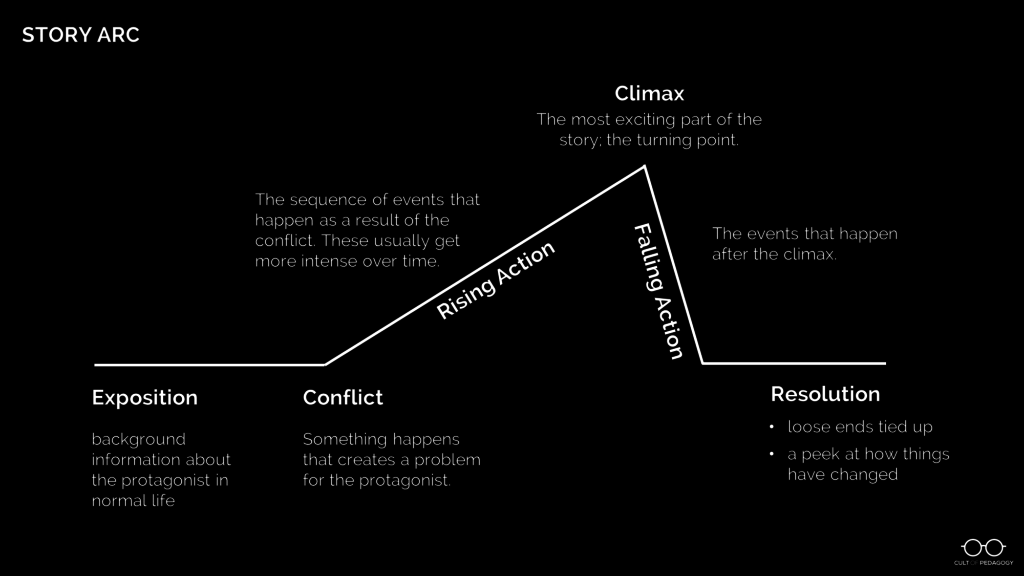
Step 3: Introduce the Assignment
Up to this point, students have been immersed in storytelling. Now give them specific instructions for what they are going to do. Share your assignment rubric so they understand the criteria that will be used to evaluate them; it should be ready and transparent right from the beginning of the unit. As always, I recommend using a single point rubric for this.
Step 4: Read Models
Once the parameters of the assignment have been explained, have students read at least one model story, a mentor text that exemplifies the qualities you’re looking for. This should be a story on a topic your students can kind of relate to, something they could see themselves writing. For my narrative writing unit (see the end of this post), I wrote a story called “Frog” about a 13-year-old girl who finally gets to stay home alone, then finds a frog in her house and gets completely freaked out, which basically ruins the fun she was planning for the night.
They will be reading this model as writers, looking at how the author shaped the text for a purpose, so that they can use those same strategies in their own writing. Have them look at your rubric and find places in the model that illustrate the qualities listed in the rubric. Then have them complete a story arc for the model so they can see the underlying structure.
Ideally, your students will have already read lots of different stories to look to as models. If that isn’t the case, this list of narrative texts recommended by Cult of Pedagogy followers on Twitter would be a good place to browse for titles that might be right for your students. Keep in mind that we have not read most of these stories, so be sure to read them first before adopting them for classroom use.
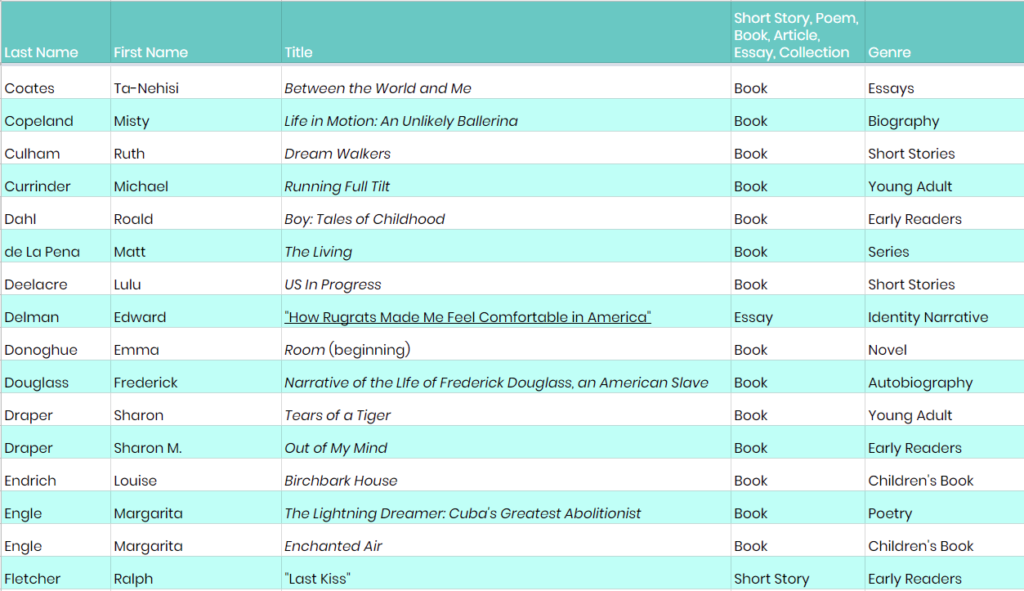
Step 5: Story Mapping
At this point, students will need to decide what they are going to write about. If they are stuck for a topic, have them just pick something they can write about, even if it’s not the most captivating story in the world. A skilled writer could tell a great story about deciding what to have for lunch. If they are using the skills of narrative writing, the topic isn’t as important as the execution.
Have students complete a basic story arc for their chosen topic using a diagram like the one below. This will help them make sure that they actually have a story to tell, with an identifiable problem, a sequence of events that build to a climax, and some kind of resolution, where something is different by the end. Again, if you are writing with your students, this would be an important step to model for them with your own story-in-progress.
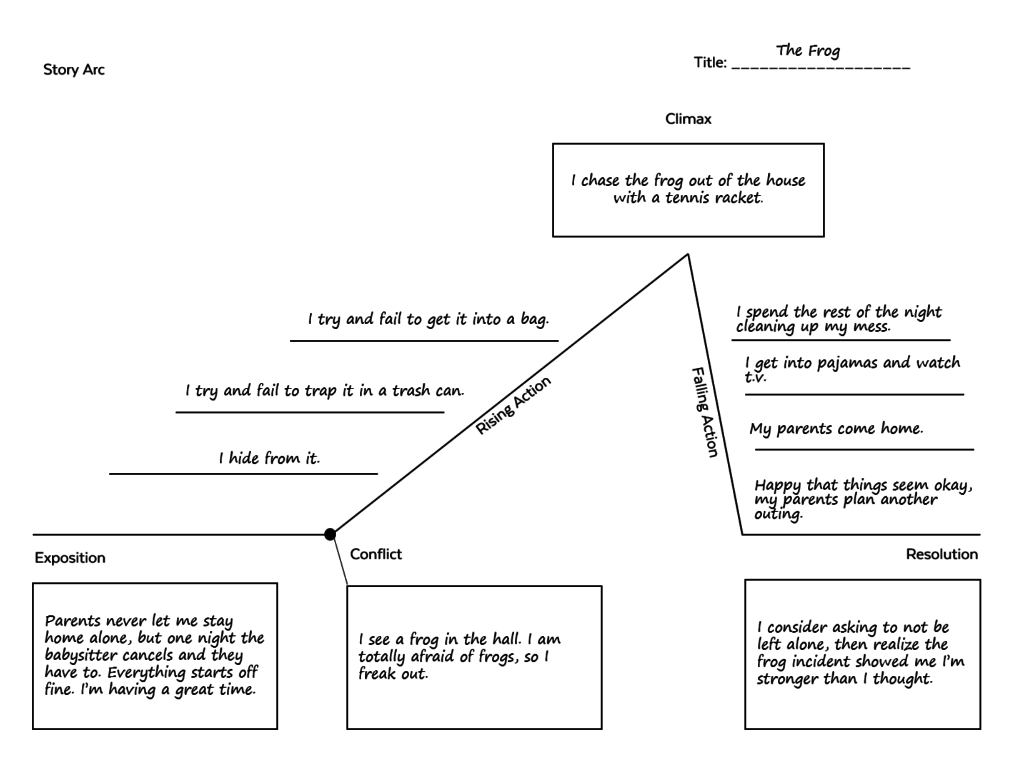
Step 6: Quick Drafts
Now, have students get their chosen story down on paper as quickly as possible: This could be basically a long paragraph that would read almost like a summary, but it would contain all the major parts of the story. Model this step with your own story, so they can see that you are not shooting for perfection in any way. What you want is a working draft, a starting point, something to build on for later, rather than a blank page (or screen) to stare at.
Step 7: Plan the Pacing
Now that the story has been born in raw form, students can begin to shape it. This would be a good time for a lesson on pacing, where students look at how writers expand some moments to create drama and shrink other moments so that the story doesn’t drag. Creating a diagram like the one below forces a writer to decide how much space to devote to all of the events in the story.
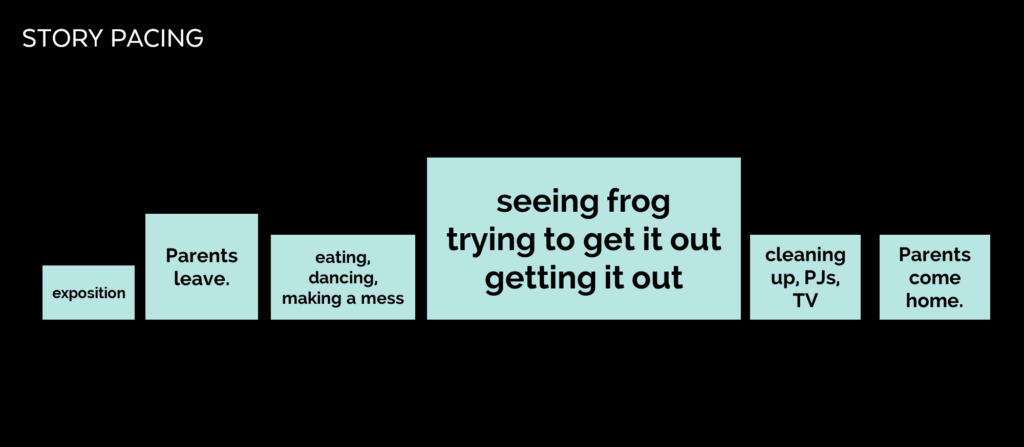
Step 8: Long Drafts
With a good plan in hand, students can now slow down and write a proper draft, expanding the sections of their story that they plan to really draw out and adding in more of the details that they left out in the quick draft.
Step 9: Workshop
Once students have a decent rough draft—something that has a basic beginning, middle, and end, with some discernible rising action, a climax of some kind, and a resolution, you’re ready to shift into full-on workshop mode. I would do this for at least a week: Start class with a short mini-lesson on some aspect of narrative writing craft, then give students the rest of the period to write, conference with you, and collaborate with their peers. During that time, they should focus some of their attention on applying the skill they learned in the mini-lesson to their drafts, so they will improve a little bit every day.
Topics for mini-lessons can include:
- How to weave exposition into your story so you don’t give readers an “information dump”
- How to carefully select dialogue to create good scenes, rather than quoting everything in a conversation
- How to punctuate and format dialogue so that it imitates the natural flow of a conversation
- How to describe things using sensory details and figurative language; also, what to describe…students too often give lots of irrelevant detail
- How to choose precise nouns and vivid verbs, use a variety of sentence lengths and structures, and add transitional words, phrases, and features to help the reader follow along
- How to start, end, and title a story
Step 10: Final Revisions and Edits
As the unit nears its end, students should be shifting away from revision , in which they alter the content of a piece, toward editing , where they make smaller changes to the mechanics of the writing. Make sure students understand the difference between the two: They should not be correcting each other’s spelling and punctuation in the early stages of this process, when the focus should be on shaping a better story.
One of the most effective strategies for revision and editing is to have students read their stories out loud. In the early stages, this will reveal places where information is missing or things get confusing. Later, more read-alouds will help them immediately find missing words, unintentional repetitions, and sentences that just “sound weird.” So get your students to read their work out loud frequently. It also helps to print stories on paper: For some reason, seeing the words in print helps us notice things we didn’t see on the screen.
To get the most from peer review, where students read and comment on each other’s work, more modeling from you is essential: Pull up a sample piece of writing and show students how to give specific feedback that helps, rather than simply writing “good detail” or “needs more detail,” the two comments I saw exchanged most often on students’ peer-reviewed papers.
Step 11: Final Copies and Publication
Once revision and peer review are done, students will hand in their final copies. If you don’t want to get stuck with 100-plus papers to grade, consider using Catlin Tucker’s station rotation model , which keeps all the grading in class. And when you do return stories with your own feedback, try using Kristy Louden’s delayed grade strategy , where students don’t see their final grade until they have read your written feedback.
Beyond the standard hand-in-for-a-grade, consider other ways to have students publish their stories. Here are some options:
- Stories could be published as individual pages on a collaborative website or blog.
- Students could create illustrated e-books out of their stories.
- Students could create a slideshow to accompany their stories and record them as digital storytelling videos. This could be done with a tool like Screencastify or Screencast-O-Matic .
So this is what worked for me. If you’ve struggled to get good stories from your students, try some or all of these techniques next time. I think you’ll find that all of your students have some pretty interesting stories to tell. Helping them tell their stories well is a gift that will serve them for many years after they leave your classroom. ♦
Want this unit ready-made?
If you’re a writing teacher in grades 7-12 and you’d like a classroom-ready unit like the one described above, including slideshow mini-lessons on 14 areas of narrative craft, a sample narrative piece, editable rubrics, and other supplemental materials to guide students through every stage of the process, take a look at my Narrative Writing unit . Just click on the image below and you’ll be taken to a page where you can read more and see a detailed preview of what’s included.
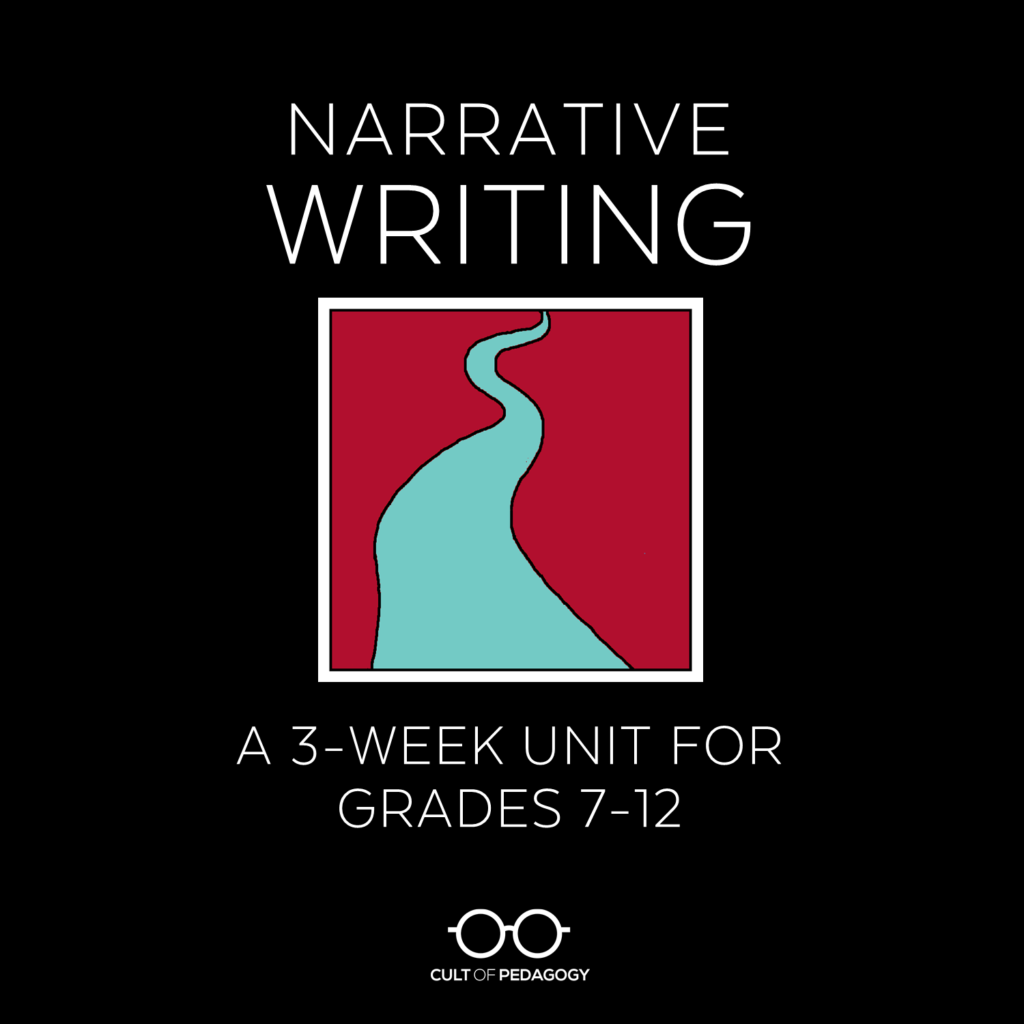
What to Read Next

Categories: Instruction , Podcast
Tags: English language arts , Grades 6-8 , Grades 9-12 , teaching strategies
52 Comments
Wow, this is a wonderful guide! If my English teachers had taught this way, I’m sure I would have enjoyed narrative writing instead of dreading it. I’ll be able to use many of these suggestions when writing my blog! BrP
Lst year I was so discouraged because the short stories looked like the quick drafts described in this article. I thought I had totally failed until I read this and realized I did not fai,l I just needed to complete the process. Thank you!
I feel like you jumped in my head and connected my thoughts. I appreciate the time you took to stop and look closely at form. I really believe that student-writers should see all dimensions of narrative writing and be able to live in whichever style and voice they want for their work.
Can’t thank you enough for this. So well curated that one can just follow it blindly and ace at teaching it. Thanks again!
Great post! I especially liked your comments about reminding kids about the power of storytelling. My favourite podcasts and posts from you are always about how to do things in the classroom and I appreciate the research you do.
On a side note, the ice breakers are really handy. My kids know each other really well (rural community), and can tune out pretty quickly if there is nothing new to learn about their peers, but they like the games (and can remember where we stopped last time weeks later). I’ve started changing them up with ‘life questions’, so the editable version is great!
I love writing with my students and loved this podcast! A fun extension to this narrative is to challenge students to write another story about the same event, but use the perspective of another “character” from the story. Books like Wonder (R.J. Palacio) and Wanderer (Sharon Creech) can model the concept for students.
Thank you for your great efforts to reveal the practical writing strategies in layered details. As English is not my first language, I need listen to your podcast and read the text repeatedly so to fully understand. It’s worthy of the time for some great post like yours. I love sharing so I send the link to my English practice group that it can benefit more. I hope I could be able to give you some feedback later on.
Thank you for helping me get to know better especially the techniques in writing narrative text. Im an English teacher for 5years but have little knowledge on writing. I hope you could feature techniques in writing news and fearute story. God bless and more power!
Thank you for this! I am very interested in teaching a unit on personal narrative and this was an extremely helpful breakdown. As a current student teacher I am still unsure how to approach breaking down the structures of different genres of writing in a way that is helpful for me students but not too restrictive. The story mapping tools you provided really allowed me to think about this in a new way. Writing is such a powerful way to experience the world and more than anything I want my students to realize its power. Stories are how we make sense of the world and as an English teacher I feel obligated to give my students access to this particular skill.
The power of story is unfathomable. There’s this NGO in India doing some great work in harnessing the power of storytelling and plots to brighten children’s lives and enlighten them with true knowledge. Check out Katha India here: http://bit.ly/KathaIndia
Thank you so much for this. I did not go to college to become a writing professor, but due to restructuring in my department, I indeed am! This is a wonderful guide that I will use when teaching the narrative essay. I wonder if you have a similar guide for other modes such as descriptive, process, argument, etc.?
Hey Melanie, Jenn does have another guide on writing! Check out A Step-by-Step Plan for Teaching Argumentative Writing .
Hi, I am also wondering if there is a similar guide for descriptive writing in particular?
Hey Melanie, unfortunately Jenn doesn’t currently have a guide for descriptive writing. She’s always working on projects though, so she may get around to writing a unit like this in the future. You can always check her Teachers Pay Teachers page for an up-to-date list of materials she has available. Thanks!
I want to write about the new character in my area
That’s great! Let us know if you need any supports during your writing process!
I absolutely adore this unit plan. I teach freshmen English at a low-income high school and wanted to find something to help my students find their voice. It is not often that I borrow material, but I borrowed and adapted all of it in the order that it is presented! It is cohesive, understandable, and fun. Thank you!!
So glad to hear this, Nicole!
Thanks sharing this post. My students often get confused between personal narratives and short stories. Whenever I ask them to write a short story, she share their own experiences and add a bit of fiction in it to make it interesting.
Thank you! My students have loved this so far. I do have a question as to where the “Frog” story mentioned in Step 4 is. I could really use it! Thanks again.
This is great to hear, Emily! In Step 4, Jenn mentions that she wrote the “Frog” story for her narrative writing unit . Just scroll down the bottom of the post and you’ll see a link to the unit.
I also cannot find the link to the short story “Frog”– any chance someone can send it or we can repost it?
This story was written for Jenn’s narrative writing unit. You can find a link to this unit in Step 4 or at the bottom of the article. Hope this helps.
I cannot find the frog story mentioned. Could you please send the link.? Thank you
Hi Michelle,
The Frog story was written for Jenn’s narrative writing unit. There’s a link to this unit in Step 4 and at the bottom of the article.
Debbie- thanks for you reply… but there is no link to the story in step 4 or at the bottom of the page….
Hey Shawn, the frog story is part of Jenn’s narrative writing unit, which is available on her Teachers Pay Teachers site. The link Debbie is referring to at the bottom of this post will take you to her narrative writing unit and you would have to purchase that to gain access to the frog story. I hope this clears things up.
Thank you so much for this resource! I’m a high school English teacher, and am currently teaching creative writing for the first time. I really do value your blog, podcast, and other resources, so I’m excited to use this unit. I’m a cyber school teacher, so clear, organized layout is important; and I spend a lot of time making sure my content is visually accessible for my students to process. Thanks for creating resources that are easy for us teachers to process and use.
Do you have a lesson for Informative writing?
Hey Cari, Jenn has another unit on argumentative writing , but doesn’t have one yet on informative writing. She may develop one in the future so check back in sometime.
I had the same question. Informational writing is so difficult to have a good strong unit in when you have so many different text structures to meet and need text-dependent writing tasks.
Creating an informational writing unit is still on Jenn’s long list of projects to get to, but in the meantime, if you haven’t already, check out When We All Teach Text Structures, Everyone Wins . It might help you out!
This is a great lesson! It would be helpful to see a finished draft of the frog narrative arc. Students’ greatest challenge is transferring their ideas from the planner to a full draft. To see a full sample of how this arc was transformed into a complete narrative draft would be a powerful learning tool.
Hi Stacey! Jenn goes into more depth with the “Frog” lesson in her narrative writing unit – this is where you can find a sample of what a completed story arc might look. Also included is a draft of the narrative. If interested in checking out the unit and seeing a preview, just scroll down to the bottom of the post and click on the image. Hope this helps!
Helped me learn for an entrance exam thanks very much
Is the narrative writing lesson you talk about in https://www.cultofpedagogy.com/narrative-writing/
Also doable for elementary students you think, and if to what levels?
Love your work, Sincerely, Zanyar
Hey Zanyar,
It’s possible the unit would work with 4th and 5th graders, but Jenn definitely wouldn’t recommend going any younger. The main reason for this is that some of the mini-lessons in the unit could be challenging for students who are still concrete thinkers. You’d likely need to do some adjusting and scaffolding which could extend the unit beyond the 3 weeks. Having said that, I taught 1st grade and found the steps of the writing process, as described in the post, to be very similar. Of course learning targets/standards were different, but the process itself can be applied to any grade level (modeling writing, using mentor texts to study how stories work, planning the structure of the story, drafting, elaborating, etc.) Hope this helps!
This has made my life so much easier. After teaching in different schools systems, from the American, to British to IB, one needs to identify the anchor standards and concepts, that are common between all these systems, to build well balanced thematic units. Just reading these steps gave me the guidance I needed to satisfy both the conceptual framework the schools ask for and the standards-based practice. Thank you Thank you.
Would this work for teaching a first grader about narrative writing? I am also looking for a great book to use as a model for narrative writing. Veggie Monster is being used by his teacher and he isn’t connecting with this book in the least bit, so it isn’t having a positive impact. My fear is he will associate this with writing and I don’t want a negative association connected to such a beautiful process and experience. Any suggestions would be helpful.
Thank you for any information you can provide!
Although I think the materials in the actual narrative writing unit are really too advanced for a first grader, the general process that’s described in the blog post can still work really well.
I’m sorry your child isn’t connecting with The Night of the Veggie Monster. Try to keep in mind that the main reason this is used as a mentor text is because it models how a small moment story can be told in a big way. It’s filled with all kinds of wonderful text features that impact the meaning of the story – dialogue, description, bold text, speech bubbles, changes in text size, ellipses, zoomed in images, text placement, text shape, etc. All of these things will become mini-lessons throughout the unit. But there are lots of other wonderful mentor texts that your child might enjoy. My suggestion for an early writer, is to look for a small moment text, similar in structure, that zooms in on a problem that a first grader can relate to. In addition to the mentor texts that I found in this article , you might also want to check out Knuffle Bunny, Kitten’s First Full Moon, When Sophie Gets Angry Really Really Angry, and Whistle for Willie. Hope this helps!
I saw this on Pinterest the other day while searching for examples of narritives units/lessons. I clicked on it because I always click on C.o.P stuff 🙂 And I wasn’t disapointed. I was intrigued by the connection of narratives to humanity–even if a student doesn’t identify as a writer, he/she certainly is human, right? I really liked this. THIS clicked with me.
A few days after I read the P.o.C post, I ventured on to YouTube for more ideas to help guide me with my 8th graders’ narrative writing this coming spring. And there was a TEDx video titled, “The Power of Personal Narrative” by J. Christan Jensen. I immediately remembered the line from the article above that associated storytelling with “power” and how it sets humans apart and if introduced and taught as such, it can be “extraordinary.”
I watched the video and to the suprise of my expectations, it was FANTASTIC. Between Jennifer’s post and the TEDx video ignited within me some major motivation and excitement to begin this unit.
Thanks for sharing this with us! So glad that Jenn’s post paired with another text gave you some motivation and excitement. I’ll be sure to pass this on to Jenn!
Thank you very much for this really helpful post! I really love the idea of helping our students understand that storytelling is powerful and then go on to teach them how to harness that power. That is the essence of teaching literature or writing at any level. However, I’m a little worried about telling students that whether a piece of writing is fact or fiction does not matter. It in fact matters a lot precisely because storytelling is powerful. Narratives can shape people’s views and get their emotions involved which would, in turn, motivate them to act on a certain matter, whether for good or for bad. A fictional narrative that is passed as factual could cause a lot of damage in the real world. I believe we should. I can see how helping students focus on writing the story rather than the truth of it all could help refine the needed skills without distractions. Nevertheless, would it not be prudent to teach our students to not just harness the power of storytelling but refrain from misusing it by pushing false narratives as factual? It is true that in reality, memoirs pass as factual while novels do as fictional while the opposite may be true for both cases. I am not too worried about novels passing as fictional. On the other hand, fictional narratives masquerading as factual are disconcerting and part of a phenomenon that needs to be fought against, not enhanced or condoned in education. This is especially true because memoirs are often used by powerful people to write/re-write history. I would really like to hear your opinion on this. Thanks a lot for a great post and a lot of helpful resources!
Thank you so much for this. Jenn and I had a chance to chat and we can see where you’re coming from. Jenn never meant to suggest that a person should pass off a piece of fictional writing as a true story. Good stories can be true, completely fictional, or based on a true story that’s mixed with some fiction – that part doesn’t really matter. However, what does matter is how a student labels their story. We think that could have been stated more clearly in the post , so Jenn decided to add a bit about this at the end of the 3rd paragraph in the section “A Note About Form: Personal Narrative or Short Story?” Thanks again for bringing this to our attention!
You have no idea how much your page has helped me in so many ways. I am currently in my teaching credential program and there are times that I feel lost due to a lack of experience in the classroom. I’m so glad I came across your page! Thank you for sharing!
Thanks so much for letting us know-this means a whole lot!
No, we’re sorry. Jenn actually gets this question fairly often. It’s something she considered doing at one point, but because she has so many other projects she’s working on, she’s just not gotten to it.
I couldn’t find the story
Hi, Duraiya. The “Frog” story is part of Jenn’s narrative writing unit, which is available on her Teachers Pay Teachers site. The link at the bottom of this post will take you to her narrative writing unit, which you can purchase to gain access to the story. I hope this helps!
I am using this step-by-step plan to help me teach personal narrative story writing. I wanted to show the Coca-Cola story, but the link says the video is not available. Do you have a new link or can you tell me the name of the story so I can find it?
Thank you for putting this together.
Hi Corri, sorry about that. The Coca-Cola commercial disappeared, so Jenn just updated the post with links to two videos with good stories. Hope this helps!
Leave a Reply
Your email address will not be published.
- Grades 6-12
- School Leaders
Win 10 Summer Reading Books from ThriftBooks 📚!
15 Inspiring Personal Narrative Examples for Writers
Reveal a part of yourself in your essay.

Students start writing personal narratives at a young age, learning to use descriptive language to tell a story about their own experiences. Try sharing these personal narrative examples for elementary, middle, and high school to help them understand this essay form.
What is a personal narrative?
Think of a narrative essay like telling a story. Use descriptive language, and be sure you have a beginning, middle, and end. The essay should recount your personal experiences, including your thoughts, feelings, and actions.
Learn more about personal narrative essays here:
- What Is Narrative Writing, and How Do I Teach It in the Classroom?
- Engaging Personal Narrative Ideas for Kids and Teens
- Best Mentor Texts for Narrative Writing in Elementary School
Elementary School Personal Narrative Examples
In elementary school, personal narratives might be quite short, just a paragraph or two. The key is to encourage kids to embrace a personal style of writing, one that speaks in their own voice. Take a look at these elementary school personal narrative essay examples for inspiration.
The Horrible Day
“next i fell asleep in my cereal and my brother stole my toast”—anonymous student.

In this short personal narrative written by a 2nd grader, the author describes a bad day with lots of details and an informal tone. It’s a great model for your youngest writers.
Read the full essay: The Horrible Day at Thoughtful Learning
Keep an Eye on the Sky!
“as we made our way out to the field, my stomach slowly turned into a giant knot of fear.” —anonymous student.
Any student who dreads gym class will connect with this essay, which turns a challenge into a triumph. This narrative from Time for Kids is annotated, with highlighted details and tips to help kids write their own essay.
Read the full essay: Keep an Eye on the Sky! at Time for Kids
Grandpa, Chaz, and Me
“i really miss grandpa, and so does my brother, even though he never met him.” —cody, 4th grade student.
Written by a 4th grader, this essay relates the author’s loss of a grandfather at a very young age. Using simple, personal language, they tell a compelling story in a few short paragraphs.
Read the full essay: Grandpa, Chaz, and Me at Thoughtful Learning
Surviving an Embarrassing Situation
“i had made the shot in the wrong basket, giving the green shirts the win” —anonymous student.

Personal narratives tell a story, with a beginning, middle, and end. This annotated essay outlines those parts, making it easier for young writers to do the same in their own writing.
Read the full essay: Surviving an Embarrassing Situation at Sopris West Educational Services
“Do you have a friend who loves you?” —Kendra, 4th grade student
Writing about friends gives writers the chance to describe someone’s physical characteristics and personality. This 4th grade essay uses personal details to bring a beloved friend to life.
Read the full essay: Ann at Thoughtful Learning
Middle School Personal Narrative Examples
By middle school, personal narratives are longer and more involved, telling more detailed stories and experiences. These middle school personal narrative essay examples model strong writing skills for this age group.
“As thoughts of certain death run through my mind, the world appears a precious, treasured place.” —Amy, student

Describing an opportunity to overcome your worst fears makes an excellent personal narrative topic. The vivid descriptions of the landscape and the author’s feelings help the reader make a strong connection to the author.
Read the full essay: The Climb at Thoughtful Learning
The Best Friend Question
“i’ve often wondered, does not having a best friend make me defective” —blanche li, age 13, diablo vista middle school, danville, california.
When her Spanish teacher asked students for an essay describing their best friend, 13-year-old Blanche Li fell back on her standard story: that of a made-up person. Here, she explains why she made up “Haley” and wonders what having an imaginary best friend says about her.
Read the full essay: The Best Friend Question at The New York Times

The Racist Warehouse
“i didn’t know racism was still around; i thought that situation had died along with dr. king.” —alicia, 8th grade student.
Strong personal narratives often relate the way the author learned an important life lesson. Here, an 8th grader describes her first experience with racism, in an essay that will sadly ring true with many readers.
Read the full essay: The Racist Warehouse at Thoughtful Teaching
“For the first time, we realized that we didn’t know how to express our voice, and we always suppressed it.” —Jocelyn C., 7th grade student, Texas

Seventh-grader Jocelyn C. describes the unique experience of spending two years living in an RV with her family, traveling the country. She relates the ups and downs of their trip, illustrating the way her family learned to live together in close quarters and embrace the adventure.
Read the full essay: RV Journey at Write From the Heart
An Eight Pound Rival
“i’m trying to accept that he didn’t mean to dominate the center stage all the time, that’s just one of the many lovable assets of his personality.”.
A new sibling can change everything in a family, especially when you’ve always been the baby. This middle schooler explains her challenging relationship with a little brother that she loves, even when he drives her a bit crazy. (Find this essay on page 42 at the link.)
Read the full essay: An Eight Pound Rival at Teaching That Makes Sense
High School Personal Narrative Examples
High school students have more complex stories to tell, though they’re sometimes reluctant to do so. Reading personal narrative essay examples like these can encourage them to open up and get their thoughts, feelings, and ideas down on the page.
Sorry, Wrong Number
“when i received the first text, i was a playful sixth grader, always finding sly ways to be subversive in school and with friends.” —michelle ahn, high school student.

When Michelle Ahn was 11, she started getting texts for a wrong number, a man named Jared. Rather than correcting the error, she spends the next few years occasionally engaging with his texters as “Jared,” learning more about him. Though she finally comes clean, her time as “Jared” exposes her to a way of life very different from her own, and opens her eyes to the inner lives of others.
Read the full essay: Sorry, Wrong Number at The New York Times
Caught in the Net
“little does everyone else know how often i’m not doing school research or paper writing; instead i’m aimlessly writing emails or chatting with internet friends and family hundreds of miles away.” —kim, college student.
Even before social media and smartphones swept the world, internet addiction had become a problem. Here, a student shares her experiences in AOL chat rooms, meeting people from around the globe. Eventually, she realizes she’s sacrificing life in the real world for her digital friends and experiences, and works to find the right balance.
Read the full essay: Caught in the Net at Thoughtful Learning
Nothing Extraordinary
“an uneasy feeling started to settle in my chest. i tried to push it out, but once it took root it refused to be yanked up and tossed away.” —jeniffer kim, high school student.
During an ordinary shopping trip, high schooler Jenniffer Kim suddenly realizes she’s ashamed of her mother. At the same time, she recognizes all the sacrifices her mom has made for her, and gladly takes the chance to make a tiny sacrifice of her own.
Read the full essay: Nothing Extraordinary at The New York Times
The Pot Calling the Kettle Black
“at this point in life, i had not yet learned to be gentle with myself, or others.” —anonymous student.

A teen who lives with bipolar disorder recounts a difficult conversation with her parents, in which her mother dismisses her as “crazy.” A few years later, this same teen finds herself in the emergency room, where her mother has just tried to die by suicide. “Crazy!” the daughter thinks. After her mother also receives a bipolar disorder diagnosis, the author concludes, “‘Crazy’ is a term devised to dismiss people.”
Read the full essay: The Pot Calling the Kettle Black at Pressbooks
What a Black Woman Wishes Her Adoptive White Parents Knew
“i know that i am different, but do not have the words to understand how.” —mariama lockington.
Though not written by a high schooler, this essay by Mariama Lockington makes an excellent mentor text for this age group. Lockington dives deep into her feelings about being adopted by parents of a different race, and shares her challenges in poignant language that speaks directly to the reader.
Read the full essay: What a Black Woman Wishes Her Adoptive White Parents Knew at Buzzfeed News
Do you use personal narrative examples as mentor texts in your classroom? Come share your experiences and ask for advice in the We Are Teachers HELPLINE group on Facebook !
Plus, strong persuasive writing examples (essays, speeches, ads, and more) ..

You Might Also Like

65 Engaging Personal Narrative Ideas for Kids and Teens
Tell a story to engage the reader. Continue Reading
Copyright © 2024. All rights reserved. 5335 Gate Parkway, Jacksonville, FL 32256

Personal Narrative Writing Guide
WHAT IS A PERSONAL NARRATIVE?

A Personal Narrative recounts an event or experience from the writer’s life in story form and often in intimate detail. This text type not only relates to the events happening around the author but also often reveals the writer’s inner thoughts and emotions also.
A personal narrative can be understood as nonfiction storytelling based on the writer’s thoughts, feelings, and experiences. Told in the first person, the writer draws on their life events to construct a story.
Combining elements of nonfiction recount writing with introspection and the frequent use of literary devices more commonly associated with fiction and poetry, a personal narrative can be best understood as a type of creative nonfiction .
PERSONAL NARRATIVE VERSUS A PERSONAL RECOUNT: SO WHAT’S THE DIFFERENCE?
Personal narratives are also frequently referred to as personal recounts. They share much in common but are unique text types, so let’s explore how they compare and contrast.
When we first instruct our students to write stories based on the events of their own lives, they will inevitably write simple recounts. These recounts are based on retelling personal incidents of their lives but lack the depth we can typically expect to find in a personal narrative.
While personal narratives also recount events from the writer’s life, with greater emphasis placed on exploring the writer’s thoughts and feelings on these events rather than just what happened.
A personal narrative is a means for the writer to explore the meaning of the events in their life. It is, at its core, an introspective and creative endeavor that focuses as much on the interior life of the writer as it does on external events.

While the conclusion of a traditional recount usually provides some of the writer’s insights, in a personal narrative, these are woven throughout the text.
STRUCTURE AND FEATURES OF A PERSONAL NARRATIVE
Personal narrative structure.
ORIENTATION Explain the who, what, when, and where of the experience in your introduction to your audience.
FOCUS Mainly focus on meaningful events.
CHRONOLOGY Events are described in the sequence in which they occurred.
ORGANIZATION Relevant information is organized into paragraphs
INSIGHT & MEANING Include personal comments, opinions or interpretations of the experience or event in your personal narrative.
PERSONAL NARRATIVE FEATURES
TENSE The first and third person are used most frequently and recall is always written in the past tense. Present tense can be used for analysis and opinion.
NOUNS Use proper nouns to refer to specific people, places times and events
VOICE Both active and passive voice are used in recounts. Use these to express your emotions and thinking clearly.
CONNECTIVES Use conjunctions and connectives to link events and indicate time sequence in your personal narrative.
A COMPLETE TEACHING UNIT ON PERSONAL NARRATIVE WRITING
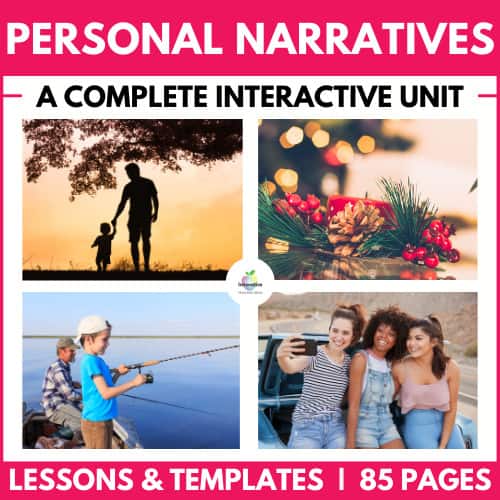
Teach your students to write AMAZING PERSONAL NARRATIVES using a proven model of research skills, writing strategies and engaging content. ALL CONTENT, RESOURCES AND ASSESSMENT TOOLS INCLUDED covering.
Download this COMPLETE 85 PAGE UNIT today. NO PREPARATION REQUIRED.
HOW LONG SHOULD A PERSONAL NARRATIVE BE?
The personal narrative is a modern text type and therefore has no traditionally defined optimum length, and we can find texts ranging from a couple of hundred words to a multi-volume series in this genre.
However, for our students, this text type can be thought of in terms of length as similar to an essay. Like an essay, the text needs to be long enough to comprehensively answer the question, prompt, or the event/experience the student is retelling.
David Sedaris, the American writer and one of the best-known writers of humorous personal narratives, has written many books that could accurately be classified in this genre.
While these full-length books are often built around a loose theme, each chapter could stand alone as a personal narrative essay in its own right, each built around a single identifiable experience or event.
As with an essay, the length of a personal narrative can be based on a variety of factors, including:
- Age and ability of the students
- Specifics of the question or writing prompt
- Any limitation imposed by a word count
- The complexity of the event/experience being written about.
Regardless of length, given its structural similarity with the essay, personal narratives usually follow a basic three-part structure.
HOW TO WRITE A PERSONAL NARRATIVE STEP-BY-STEP
We mentioned previously that this text type is relatively modern, so there aren’t many fixed rules concerning structure. That said, we can usually identify three distinct parts of a personal narrative corresponding to the three parts outlined in the hamburger essay or the 5-paragraph essay format. These are:

- The introduction
- The body paragraphs
- The conclusion
If you want an in-depth guide to this format, check out our comprehensive article here . But, for now, let’s take a brief look at the purpose of each section as it relates to a personal narrative.
WRITING THE INTRODUCTION OF A PERSONAL NARRATIVE

The introduction of a personal narrative performs several functions.
1: It hooks the Reader
The first job of the introduction is to ‘hook’ the reader. If we can’t catch the reader’s interest initially, there will be no middle or end for the reader. A strong hook is needed at the very outset, and it can take several forms.
Some effective hooks to open a personal narrative with include:
- A bold claim
- An interesting anecdote
- A fascinating fact or revealing statistic
- A compelling quotation
Whichever technique the student chooses to open their narrative with, they should ensure it is relevant to the subject matter explored, whether it focuses on external or internal events or experiences or a mixture of both.
2: It orients the Reader
Like many other nonfiction and fiction text types, the opening paragraph (or paragraphs) will also orient the reader by answering some basic questions such as:
- What is the text about?
- Who is in this story?
- Where is it set?
- When do the events or experiences occur?
While it may also hint at why these events or experiences matter, a detailed answer to the why of a personal narrative may be saved for the text’s conclusion.
This section of the personal narrative can also be thought of as The Exposition .
3: It Sets the Tone
The introduction reveals not only what the text will be about but also how the writer (and, by extension, the reader) will treat the topic. This is the tone.
For example, a more sombre tone has been established where the language used is serious and formal. In this instance, the reader will adopt a more serious approach to the work.
On the other hand, if the treatment of the event or experience is humorous, this will be apparent in the language choices the writer makes and the mood they establish. Going forward, the reader can reasonably expect to be amused by what’s to come in the text.
THE BODY PARAGRAPHS OF A PERSONAL NARRATIVE
The body paragraphs of a personal narrative comprise the bulk of the text.
As with any type of recount, this section will generally focus on the chronological retelling of an event or experience.
However, there is another significant difference between this type of recount and the other types.’ The root of this difference can be found in the word ‘narrative’.
While the body paragraphs of a personal narrative can make use of some of the defining characteristics of more traditional types of recount, if the introduction acts as the exposition of the setting and character of the story, the body paragraphs move the text along its story arc.
Though we will cover the main elements briefly, structuring a story is an art in itself and if you want to find out more about it, check out our detailed article on the subject here.
Also, if you want to learn more about the structure of general recounts, find out more here .
While we’ve seen that the introduction of a personal narrative corresponds to a story’s exposition, the following elements of a story arc can be found in the text’s body.
1: The Problem
The problem or conflict is an essential ingredient in any story worth the name. It creates the story’s focal point, ignites the reader’s interest, and drives the story forward. In a personal narrative, this problem can be internal or external, however, there is often an emphasis placed on how the issues affect the writer psychologically. 2: The Rising Action
As the narrative develops, the dramatic tension will tend to increase. The main problem will intensify, or the writer may introduce additional more minor problems to amp things up. 3: The Climax
This is where the story reaches its dramatic high point. In the case of a personal narrative where the conflict or problem is psychological, this drama and its climax may play out internally.
WRITING THE CONCLUSION OF YOUR PERSONAL NARRATIVE ESSAY

This third and final section of the personal narrative performs a slightly different function to a regular essay’s conclusion.
While the conclusions of most nonfiction text types focus on restating a central thesis and/or providing a summary of arguments, the conclusion in a personal narrative follows a story’s final section more closely.
That is, it usually contains the story’s falling action and resolution.
Let’s take a quick look at each.
1: The Falling Action
The story arc dips in dramatic tension after the dramatic high point of the climax. As personal narratives often focus on ‘internal’ events, this ‘action’ can also occur internally. 2: Resolution
The resolution marks the end of the story, and in this text type, it usually involves some personal change in circumstances or transformation. It can also take the form of a lesson learned or new knowledge attained.
TIPS FOR WRITING A GREAT PERSONAL NARRATIVE ESSAY
- Begin with a clear and compelling story: Your personal narrative essay should focus on a significant event or experience in your life that you want to share with the reader.
- Write in the first person perspective: Use “I” statements to describe your experiences and thoughts and take us inside your mind.
- Be descriptive: To bring your story to life, use descriptive language to paint a picture of the sights, sounds, and emotions of your experience.
- Focus on what matters the most: Tell a powerful story with just a few key details. When writing your personal narrative, focus on the most impactful events and thoughts that help convey your message.
- Emphasize the impact the experience had upon you: Leave the reader with a clear understanding of the impact that the experience had on your life.
- Be true to yourself: Ensure your personal narrative essay is honest and genuine in your descriptions and reflections.
- Deliver a powerful ending: The conclusion should summarize the major points of your essay and leave the reader with a lasting impression.
- Review and Revise: Don’t be afraid to proofread your essay several times to ensure it is the best it can be.

Teaching Resources
Use our resources and tools to improve your student’s writing skills through proven teaching strategies.
PERSONAL NARRATIVE TEACHING STRATEGIES AND ACTIVITIES
PERSONAL NARRATIVE PRACTICE EXERCISE: ACTIVITY 1
- Organise your students into small groups of four or five
- Provide each group with a selection of personal recounts
- Can the students identify how each sample text attempts to hook the reader in the opening paragraph?
- How effectively does the introduction of each text orient the reader?
- What is the tone of the text? How has this tone been created?
PERSONAL NARRATIVE PRACTICE EXERCISE: ACTIVITY 2
In their groups, with their sample personal narrative texts, ask students to identify how the writer deals with each element as listed below and discuss how effectively they have done so.
- The Problem
- The Rising Action
PERSONAL NARRATIVE PRACTICE EXERCISE: ACTIVITY 3
Now students understand how to structure and write each stage of their personal narrative, encourage them to spend some time brainstorming events and experiences from their lives that could serve as the topic for their writing.
When they have chosen a suitable topic, instruct them to begin planning the writing of their text using the categories listed above. They might even wish to create a simple graphic organizer to help.
For example:
Introduction
- What is the opening hook?
Body Paragraphs
- What is the central problem?
- What happens in the rising action?
- How does the climax play out?
- What happens in the falling action?
- What is the resolution of the story?
Once students have their narrative adequately planned, it’s time to get them writing earnestly to put all that theory into practice.
PERSONAL NARRATIVE WRITING TEMPLATE / GRAPHIC ORGANIZER

PERSONAL NARRATIVE WRITING EXAMPLES
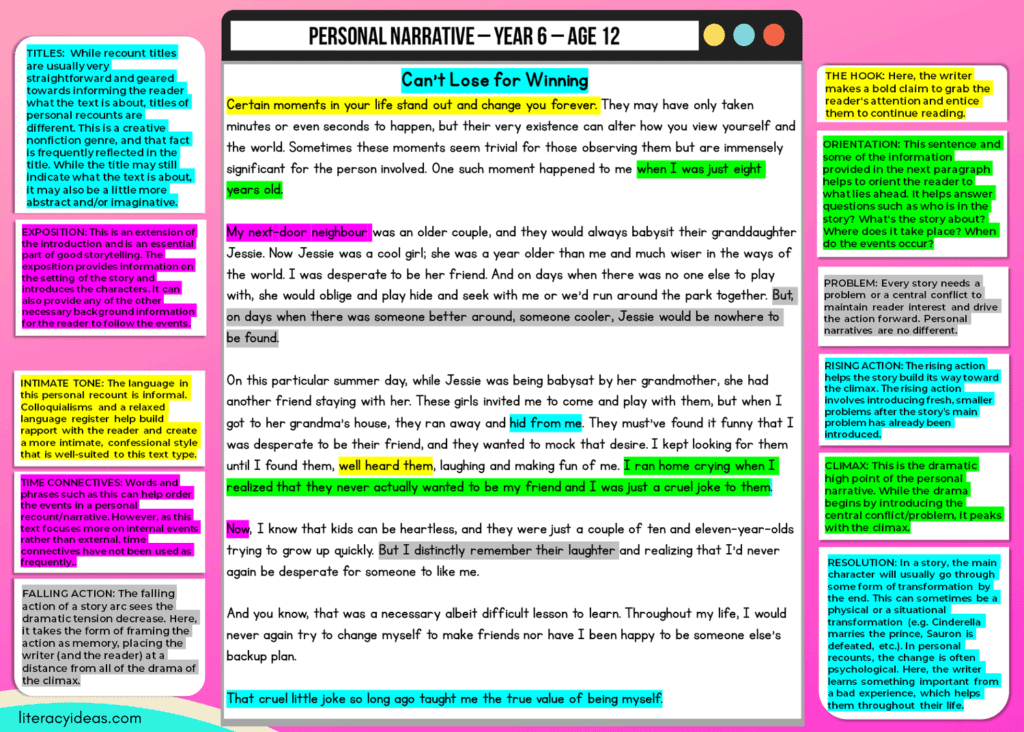
VIDEO TUTORIAL ON PERSONAL NARRATIVE WRITING

NARRATIVE WRITING CHECKLIST BUNDLE

⭐⭐⭐⭐⭐ (92 Reviews)
RELEVANT ARTICLES

How to Write a Recount Text (And Improve your Writing Skills)

How to Write a Historical Recount Text

5 Easy Recount Writing Lesson Plans students love.

15 Awesome Recount & Personal Narrative Topics
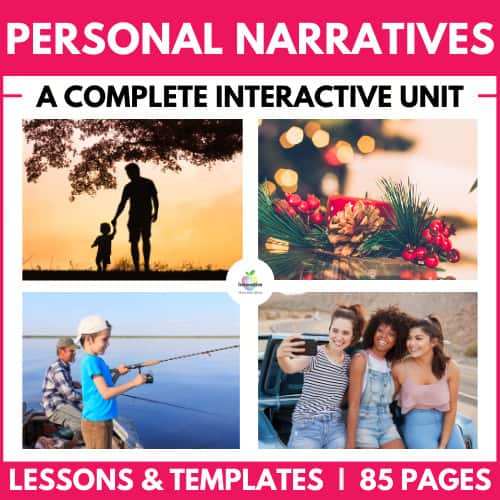
Explore our Teaching Unit on PERSONAL NARRATIVES
- Features for Creative Writers
- Features for Work
- Features for Higher Education
- Features for Teachers
- Features for Non-Native Speakers
- Learn Blog Grammar Guide Community Events FAQ
- Grammar Guide
Telling the Story of Yourself: 6 Steps to Writing Personal Narratives

Jennifer Xue

Table of Contents
Why do we write personal narratives, 6 guidelines for writing personal narrative essays, inspiring personal narratives, examples of personal narrative essays, tell your story.
First off, you might be wondering: what is a personal narrative? In short, personal narratives are stories we tell about ourselves that focus on our growth, lessons learned, and reflections on our experiences.
From stories about inspirational figures we heard as children to any essay, article, or exercise where we're asked to express opinions on a situation, thing, or individual—personal narratives are everywhere.
According to Psychology Today, personal narratives allow authors to feel and release pains, while savouring moments of strength and resilience. Such emotions provide an avenue for both authors and readers to connect while supporting healing in the process.
That all sounds great. But when it comes to putting the words down on paper, we often end up with a list of experiences and no real structure to tie them together.
In this article, we'll discuss what a personal narrative essay is further, learn the 6 steps to writing one, and look at some examples of great personal narratives.
As readers, we're fascinated by memoirs, autobiographies, and long-form personal narrative articles, as they provide a glimpse into the authors' thought processes, ideas, and feelings. But you don't have to be writing your whole life story to create a personal narrative.
You might be a student writing an admissions essay , or be trying to tell your professional story in a cover letter. Regardless of your purpose, your narrative will focus on personal growth, reflections, and lessons.
Personal narratives help us connect with other people's stories due to their easy-to-digest format and because humans are empathising creatures.
We can better understand how others feel and think when we were told stories that allow us to see the world from their perspectives. The author's "I think" and "I feel" instantaneously become ours, as the brain doesn't know whether what we read is real or imaginary.
In her best-selling book Wired for Story, Lisa Cron explains that the human brain craves tales as it's hard-wired through evolution to learn what happens next. Since the brain doesn't know whether what you are reading is actual or not, we can register the moral of the story cognitively and affectively.
In academia, a narrative essay tells a story which is experiential, anecdotal, or personal. It allows the author to creatively express their thoughts, feelings, ideas, and opinions. Its length can be anywhere from a few paragraphs to hundreds of pages.
Outside of academia, personal narratives are known as a form of journalism or non-fiction works called "narrative journalism." Even highly prestigious publications like the New York Times and Time magazine have sections dedicated to personal narratives. The New Yorke is a magazine dedicated solely to this genre.
The New York Times holds personal narrative essay contests. The winners are selected because they:
had a clear narrative arc with a conflict and a main character who changed in some way. They artfully balanced the action of the story with reflection on what it meant to the writer. They took risks, like including dialogue or playing with punctuation, sentence structure and word choice to develop a strong voice. And, perhaps most important, they focused on a specific moment or theme – a conversation, a trip to the mall, a speech tournament, a hospital visit – instead of trying to sum up the writer’s life in 600 words.
In a nutshell, a personal narrative can cover any reflective and contemplative subject with a strong voice and a unique perspective, including uncommon private values. It's written in first person and the story encompasses a specific moment in time worthy of a discussion.
Writing a personal narrative essay involves both objectivity and subjectivity. You'll need to be objective enough to recognise the importance of an event or a situation to explore and write about. On the other hand, you must be subjective enough to inject private thoughts and feelings to make your point.
With personal narratives, you are both the muse and the creator – you have control over how your story is told. However, like any other type of writing, it comes with guidelines.
1. Write Your Personal Narrative as a Story
As a story, it must include an introduction, characters, plot, setting, climax, anti-climax (if any), and conclusion. Another way to approach it is by structuring it with an introduction, body, and conclusion. The introduction should set the tone, while the body should focus on the key point(s) you want to get across. The conclusion can tell the reader what lessons you have learned from the story you've just told.
2. Give Your Personal Narrative a Clear Purpose
Your narrative essay should reflect your unique perspective on life. This is a lot harder than it sounds. You need to establish your perspective, the key things you want your reader to take away, and your tone of voice. It's a good idea to have a set purpose in mind for the narrative before you start writing.
Let's say you want to write about how you manage depression without taking any medicine. This could go in any number of ways, but isolating a purpose will help you focus your writing and choose which stories to tell. Are you advocating for a holistic approach, or do you want to describe your emotional experience for people thinking of trying it?
Having this focus will allow you to put your own unique take on what you did (and didn't do, if applicable), what changed you, and the lessons learned along the way.
3. Show, Don't Tell
It's a narration, so the narrative should show readers what happened, instead of telling them. As well as being a storyteller, the author should take part as one of the characters. Keep this in mind when writing, as the way you shape your perspective can have a big impact on how your reader sees your overarching plot. Don't slip into just explaining everything that happened because it happened to you. Show your reader with action.

You can check for instances of telling rather than showing with ProWritingAid. For example, instead of:
"You never let me do anything!" I cried disdainfully.
"You never let me do anything!" To this day, my mother swears that the glare I levelled at her as I spat those words out could have soured milk.
Using ProWritingAid will help you find these instances in your manuscript and edit them without spending hours trawling through your work yourself.
4. Use "I," But Don't Overuse It
You, the author, take ownership of the story, so the first person pronoun "I" is used throughout. However, you shouldn't overuse it, as it'd make it sound too self-centred and redundant.
ProWritingAid can also help you here – the Style Report will tell you if you've started too many sentences with "I", and show you how to introduce more variation in your writing.
5. Pay Attention to Tenses
Tense is key to understanding. Personal narratives mostly tell the story of events that happened in the past, so many authors choose to use the past tense. This helps separate out your current, narrating voice and your past self who you are narrating. If you're writing in the present tense, make sure that you keep it consistent throughout.

6. Make Your Conclusion Satisfying
Satisfy your readers by giving them an unforgettable closing scene. The body of the narration should build up the plot to climax. This doesn't have to be something incredible or shocking, just something that helps give an interesting take on your story.
The takeaways or the lessons learned should be written without lecturing. Whenever possible, continue to show rather than tell. Don't say what you learned, narrate what you do differently now. This will help the moral of your story shine through without being too preachy.
GoodReads is a great starting point for selecting read-worthy personal narrative books. Here are five of my favourites.
Owl Moon by Jane Yolen
Jane Yolen, the author of 386 books, wrote this poetic story about a daughter and her father who went owling. Instead of learning about owls, Yolen invites readers to contemplate the meaning of gentleness and hope.
Night by Elie Wiesel
Elie Wiesel was a teenager when he and his family were sent to Auschwitz concentration camp in 1944. This Holocaust memoir has a strong message that such horrific events should never be repeated.
The Diary of a Young Girl by Anne Frank
This classic is a must-read by young and old alike. It's a remarkable diary by a 13-year-old Jewish girl who hid inside a secret annexe of an old building during the Nazi occupation of the Netherlands in 1942.
The Year of Magical Thinking by Joan Didion
This is a personal narrative written by a brave author renowned for her clarity, passion, and honesty. Didion shares how in December 2003, she lost her husband of 40 years to a massive heart attack and dealt with the acute illness of her only daughter. She speaks about grief, memories, illness, and hope.
Educated by Tara Westover
Author Tara Westover was raised by survivalist parents. She didn't go to school until 17 years of age, which later took her to Harvard and Cambridge. It's a story about the struggle for quest for knowledge and self-reinvention.
Narrative and personal narrative journalism are gaining more popularity these days. You can find distinguished personal narratives all over the web.
Curating the best of the best of personal narratives and narrative essays from all over the web. Some are award-winning articles.
Narratively
Long-form writing to celebrate humanity through storytelling. It publishes personal narrative essays written to provoke, inspire, and reflect, touching lesser-known and overlooked subjects.
Narrative Magazine
It publishes non,fiction narratives, poetry, and fiction. Among its contributors is Frank Conroy, the author of Stop-Time , a memoir that has never been out of print since 1967.
Thought Catalog
Aimed at Generation Z, it publishes personal narrative essays on self-improvement, family, friendship, romance, and others.
Personal narratives will continue to be popular as our brains are wired for stories. We love reading about others and telling stories of ourselves, as they bring satisfaction and a better understanding of the world around us.
Personal narratives make us better humans. Enjoy telling yours!

Write like a bestselling author
Love writing? ProWritingAid will help you improve the style, strength, and clarity of your stories.
Jennifer Xue is an award-winning e-book author with 2,500+ articles and 100+ e-books/reports published under her belt. She also taught 50+ college-level essay and paper writing classes. Her byline has appeared in Forbes, Fortune, Cosmopolitan, Esquire, Business.com, Business2Community, Addicted2Success, Good Men Project, and others. Her blog is JenniferXue.com. Follow her on Twitter @jenxuewrites].
Get started with ProWritingAid
Drop us a line or let's stay in touch via :
Purdue Online Writing Lab Purdue OWL® College of Liberal Arts
Narrative Essays

Welcome to the Purdue OWL
This page is brought to you by the OWL at Purdue University. When printing this page, you must include the entire legal notice.
Copyright ©1995-2018 by The Writing Lab & The OWL at Purdue and Purdue University. All rights reserved. This material may not be published, reproduced, broadcast, rewritten, or redistributed without permission. Use of this site constitutes acceptance of our terms and conditions of fair use.
What is a narrative essay?
When writing a narrative essay, one might think of it as telling a story. These essays are often anecdotal, experiential, and personal—allowing students to express themselves in a creative and, quite often, moving ways.
Here are some guidelines for writing a narrative essay.
- If written as a story, the essay should include all the parts of a story.
This means that you must include an introduction, plot, characters, setting, climax, and conclusion.
- When would a narrative essay not be written as a story?
A good example of this is when an instructor asks a student to write a book report. Obviously, this would not necessarily follow the pattern of a story and would focus on providing an informative narrative for the reader.
- The essay should have a purpose.
Make a point! Think of this as the thesis of your story. If there is no point to what you are narrating, why narrate it at all?
- The essay should be written from a clear point of view.
It is quite common for narrative essays to be written from the standpoint of the author; however, this is not the sole perspective to be considered. Creativity in narrative essays oftentimes manifests itself in the form of authorial perspective.
- Use clear and concise language throughout the essay.
Much like the descriptive essay, narrative essays are effective when the language is carefully, particularly, and artfully chosen. Use specific language to evoke specific emotions and senses in the reader.
- The use of the first person pronoun ‘I’ is welcomed.
Do not abuse this guideline! Though it is welcomed it is not necessary—nor should it be overused for lack of clearer diction.
- As always, be organized!
Have a clear introduction that sets the tone for the remainder of the essay. Do not leave the reader guessing about the purpose of your narrative. Remember, you are in control of the essay, so guide it where you desire (just make sure your audience can follow your lead).

Bell Ringers
How to explicitly teach elements of narrative writing.
When I ask teachers about their biggest struggle with narrative writing, they always say the narrative elements. And I totally understand why. Trying to get students to fully understand and be able to apply the narrative elements successfully in their own writing is a challenge. You’re usually left reading bland essays that leave a lot to be desired. But getting students to apply those elements is doable. It starts with explicitly teaching the elements of narrative writing to your middle school students!

What is Explicit Instruction?
I want to make sure we are on the same page with explicit instruction. Explicit instruction isn’t about beating around the bush or hoping your students will catch on. It’s about directly teaching and modeling the skill.
Typically, explicit instruction includes some combination of a lesson over the skill, modeling the skills, and providing an opportunity for practice (and correction). Of course, that process will look different for everything you do, but I’m going to show you how it can look when teaching the elements of narrative writing.
How to Explicitly Teach the Elements of Narrative Writing
To start, I want to share the basic process I used when teaching narrative writing elements to students. In my workshop, Navigating Narratives , I dive super in-depth into this process and exactly what each stage looks like, if you want to learn more.
#1 Create a Unit Plan
In the Navigating Narratives workshop, I start by showing you a plan for a narrative writing unit. This isn’t technically part of explicit instruction, but if you don’t have a plan for how you’ll tackle each narrative element – it’s going to get messy (for you and your students).
Personally, I like teach the elements over ten days. This was a system I perfected after lots of trial and error. As students learn the elements, though, they are also applying them to their writing. By day seventeen, they will have a final draft of their essay. You can grab the narrative writing pacing guide and resources inside the Narrative Writing Unit .

#2 Use Mentor Texts
To start explicitly teaching, I typically presented my students with a mentor text . If you’ve read some of my other blogs, you know I’m a big fan of mentor texts. Mentor texts help students see the skill in action and give them a guide for how to replicate the element in their own writing.
Start by showing students a mentor text and telling them what they are looking at. For instance, “Let’s look at an example of dialogue.” Make sure the class is clear on what dialogue was, then say, “Take a look at this mentor text. In a moment, I want you to tell me what you notice. What stands out?” Then make note of key features of the mentor text.
(Not sure where to get mentor texts from? When you grab the Narrative Writing Unit , I provide you with all the mentor sentences and passages you’ll need! Plus, I even walk you through how to use it with students, so you feel confident teaching the lesson.)
#3 Create a Reference Page
The key features you just noted from the mentor text will then help you create a reference page. This is where you’re going to get super explicit and clear with students. Going back to the dialogue example, hopefully, students noted the use of quotation marks. If not, you will explicitly teach the grammatical rules of dialogue and add it to their reference page.
Essentially, you want students to walk away with a reference page that outlines the element of narrative writing, including key details and any rules. The reference page can also include the mentor text so students can look back at it later.
When you attend the Navigating Narratives workshop, I’ll walk you through this entire explicit teaching process in-depth, plus you’ll get access to the Narrative Element Teaching Slides, so you can easily walk students through each element – and don’t worry about missing a single detail.
Explicitly Teaching Elements of Narrative Writing
Okay, let’s get to the good stuff. We’ve talked through the general format for explicitly teaching elements of narrative writing, but now I want to give you some specific examples of how to do that.
Create Context
Students struggle to establish context. To help, tell your students to think about how they would explain the topic to someone who knows nothing about their story. They can use the characters thoughts or dialogue to do this. It doesn’t need to be long-winded details! To explicitly teach this, show them a mentor text example of creating context.

Narrative Plot Development
Students’ stories can be dull. That’s often because they lack a climax! To avoid this issue, and explicitly teach plot development, have students create a plot diagram and start by determining their climax. Then , they can outline the rest of their story. If they need help, try outline a popular story on a plot diagram to guide students.
Sensory Details
The easiest way to explicitly teach this element of narrative writing is, you guessed it, with mentor texts! Show students how sensory details look in other stories. Then, have them create a plan for how they will include sensory details on their plot diagrams. This will ensure that they build them into their essay.
Character Development
Start by having students think about a character they have loved from a book. Have them write down what made them love these character. Help them see how those concepts are what make great character development. Then, have students brainstorm how their characters can undergo change and growth their story.
Dialogue can be tricky because it’s not just about moving the plot forward – there are also grammatical rules to follow. Have students map out dialogue on their plot diagrams, so they can note areas were the dialogue would move the story forward or reveal important information.
Then, when it comes time to write, use the Narrative Dialogue Mini Unit (which is included inthe Navgating Narratives workshop) to talk through how to use quotations, commas, capitalization, and more.
Ways to End
The last narrative writing element we’ll cover is ending the story. This can be a tricky one to explain, so I recommend turning to the mentor texts! Choose a few stories with stellar endings (or use the one’s I recommend in the Narrative Writing Unit ) and ask students what important things the author does at the end. Take a note of their responses and have them replicate that in their own story. Teaching elements of narrative writing can be tough. There’s a lot of ground to cover, and it’s not a skill we often practice with students. But, it’s doable to have students write narrative essays you’ll be excited to read. If you need support with narrative writing, check out my Navgating Narratives workshop or grab the Narrative Writing Unit for every resource you’d need to teach a successful unit.
- Read more about: Middle School Writing
You might also like...
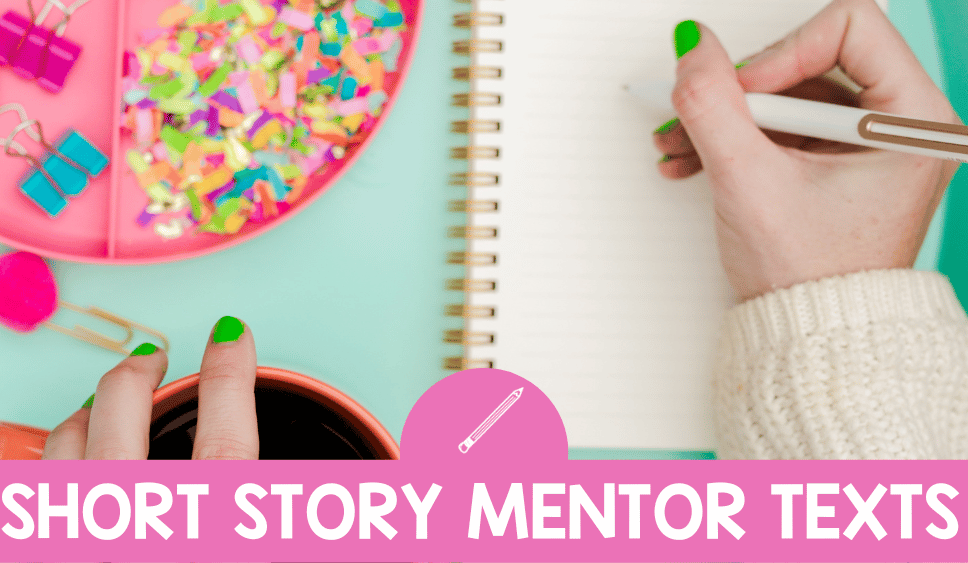
Short Story Mentor Texts to Teach Narrative Writing Elements

Using Mentor Texts for Narrative Writing in Middle School ELA
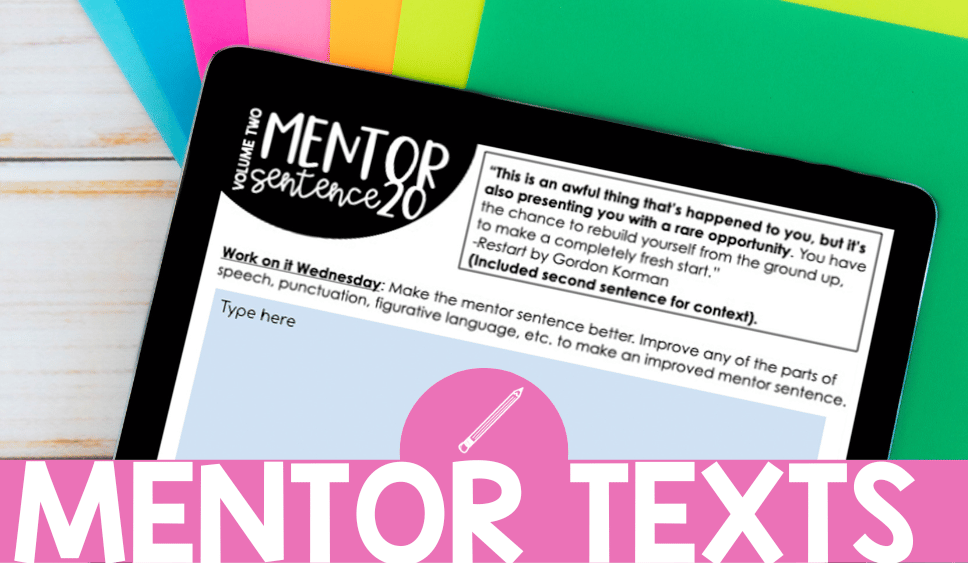
Mentor Texts: When and How To Use Them in Your ELA Lessons
Get your free middle school ela pacing guides with completed scopes and sequences for the school year..

My ELA scope and sequence guides break down every single middle school ELA standard and concept for reading, writing, and language in 6th, 7th, and 8th grade. Use the guides and resources exactly as is or as inspiration for you own!
Meet Martina

I’m a Middle School ELA teacher committed to helping you improve your teaching & implement systems that help you get everything done during the school day!
Let's Connect
Member login.
PRIVACY POLICY
TERMS OF USE
WEBSITE DISCLAIMERS
MEMBERSHIP AGREEEMENT
© The Hungry Teacher • Website by KristenDoyle.co • Contact Martina
Refugee by Alan Gratz Writing Prompts for Josef

Also included in
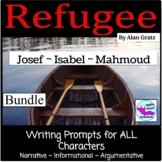
Description
Refugee by Alan Gratz is an engaging novel that will inspire your students to write. The character of Josef has a narrative writing prompt, Informational writing prompt, and an Argumentative writing prompt to extend the learning of the novel.
Refugee is about three main characters journey through three time periods. (Nazi Germany, 1990's Cuba, and Modern Syria) Due to the engaging nature of this novel, students will love learning more and writing about the topics covered in Refugee.
Narrative Writing Prompt for Josef
2 Pages for Writing
2 Note Taking Pages
5 Pages Informational Writing Prompt for Josef and Template for Guided Writing
3 Pages Template for Final Essay
5 Pages Argumentative Essay Prompt for Josef and Template for Guided Writing
Teacher Page
Questions & Answers
Middle school bookworm.
- We're hiring
- Help & FAQ
- Privacy policy
- Student privacy
- Terms of service
- Tell us what you think
- Share full article
Advertisement
Supported by
Letter of Recommendation
What I’ve Learned From My Students’ College Essays
The genre is often maligned for being formulaic and melodramatic, but it’s more important than you think.

By Nell Freudenberger
Most high school seniors approach the college essay with dread. Either their upbringing hasn’t supplied them with several hundred words of adversity, or worse, they’re afraid that packaging the genuine trauma they’ve experienced is the only way to secure their future. The college counselor at the Brooklyn high school where I’m a writing tutor advises against trauma porn. “Keep it brief , ” she says, “and show how you rose above it.”
I started volunteering in New York City schools in my 20s, before I had kids of my own. At the time, I liked hanging out with teenagers, whom I sometimes had more interesting conversations with than I did my peers. Often I worked with students who spoke English as a second language or who used slang in their writing, and at first I was hung up on grammar. Should I correct any deviation from “standard English” to appeal to some Wizard of Oz behind the curtains of a college admissions office? Or should I encourage students to write the way they speak, in pursuit of an authentic voice, that most elusive of literary qualities?
In fact, I was missing the point. One of many lessons the students have taught me is to let the story dictate the voice of the essay. A few years ago, I worked with a boy who claimed to have nothing to write about. His life had been ordinary, he said; nothing had happened to him. I asked if he wanted to try writing about a family member, his favorite school subject, a summer job? He glanced at his phone, his posture and expression suggesting that he’d rather be anywhere but in front of a computer with me. “Hobbies?” I suggested, without much hope. He gave me a shy glance. “I like to box,” he said.
I’ve had this experience with reluctant writers again and again — when a topic clicks with a student, an essay can unfurl spontaneously. Of course the primary goal of a college essay is to help its author get an education that leads to a career. Changes in testing policies and financial aid have made applying to college more confusing than ever, but essays have remained basically the same. I would argue that they’re much more than an onerous task or rote exercise, and that unlike standardized tests they are infinitely variable and sometimes beautiful. College essays also provide an opportunity to learn precision, clarity and the process of working toward the truth through multiple revisions.
When a topic clicks with a student, an essay can unfurl spontaneously.
Even if writing doesn’t end up being fundamental to their future professions, students learn to choose language carefully and to be suspicious of the first words that come to mind. Especially now, as college students shoulder so much of the country’s ethical responsibility for war with their protest movement, essay writing teaches prospective students an increasingly urgent lesson: that choosing their own words over ready-made phrases is the only reliable way to ensure they’re thinking for themselves.
Teenagers are ideal writers for several reasons. They’re usually free of preconceptions about writing, and they tend not to use self-consciously ‘‘literary’’ language. They’re allergic to hypocrisy and are generally unfiltered: They overshare, ask personal questions and call you out for microaggressions as well as less egregious (but still mortifying) verbal errors, such as referring to weed as ‘‘pot.’’ Most important, they have yet to put down their best stories in a finished form.
I can imagine an essay taking a risk and distinguishing itself formally — a poem or a one-act play — but most kids use a more straightforward model: a hook followed by a narrative built around “small moments” that lead to a concluding lesson or aspiration for the future. I never get tired of working with students on these essays because each one is different, and the short, rigid form sometimes makes an emotional story even more powerful. Before I read Javier Zamora’s wrenching “Solito,” I worked with a student who had been transported by a coyote into the U.S. and was reunited with his mother in the parking lot of a big-box store. I don’t remember whether this essay focused on specific skills or coping mechanisms that he gained from his ordeal. I remember only the bliss of the parent-and-child reunion in that uninspiring setting. If I were making a case to an admissions officer, I would suggest that simply being able to convey that experience demonstrates the kind of resilience that any college should admire.
The essays that have stayed with me over the years don’t follow a pattern. There are some narratives on very predictable topics — living up to the expectations of immigrant parents, or suffering from depression in 2020 — that are moving because of the attention with which the student describes the experience. One girl determined to become an engineer while watching her father build furniture from scraps after work; a boy, grieving for his mother during lockdown, began taking pictures of the sky.
If, as Lorrie Moore said, “a short story is a love affair; a novel is a marriage,” what is a college essay? Every once in a while I sit down next to a student and start reading, and I have to suppress my excitement, because there on the Google Doc in front of me is a real writer’s voice. One of the first students I ever worked with wrote about falling in love with another girl in dance class, the absolute magic of watching her move and the terror in the conflict between her feelings and the instruction of her religious middle school. She made me think that college essays are less like love than limerence: one-sided, obsessive, idiosyncratic but profound, the first draft of the most personal story their writers will ever tell.
Nell Freudenberger’s novel “The Limits” was published by Knopf last month. She volunteers through the PEN America Writers in the Schools program.

IMAGES
VIDEO
COMMENTS
For writing, they focus on what they could be thinking (internal) in each part of their chart and what they could be doing (external) in each part. Like everything else, we look at short stories first to see how these mentor authors do the same. Student sample of narrative plan.
Descriptive writing examples for middle school. Descriptive Writing Samples from Novels; Milwaukee Public Schools Descriptive Essay Samples (p. 137) Holt, Rinehart, Winston Descriptive Essay Models; Narrative writing examples for middle school. Writing Samples by Steve Peha (PDF) The Write Source Narrative Writing Samples; Oregon Department of ...
Here's how I like to set up personal narrative essay writing in the classroom: 1. Teach about the Genre. To begin, I like to explore the idea of personal narrative writing. While many of our middle school ELA students have written other types of essays before, this is often the first time they encounter this the personal narrative writing genre.
As a middle school language arts teacher, I've developed a systematic approach to writing that helps students improve their storytelling skills. It includes strategies for writing in a variety of genres, such as personal narrative, memoir, and creative nonfiction. And in the revision stage I teach a color-coded approach to analyzing details ...
Writing Authentic Narratives in Middle School. I recently finished writing Narratives with my 7th and 8th graders. I started planning for it weeks in advance because I wanted my students to have good, strong narratives. Here is what planning looked like at first ha! I have always done the "personal narrative" that most of us are familiar ...
There are 13 lesson plans and 15 sessions of narrative writing included in this resource: Session 1: Elements of Narrative Essays Part one. Session 2: Elements of Narrative Essays Part Two. Session 3: Narrative Plot Diagrams. Session 4: Using Sensory Details. Session 5: Using Dialogue Correctly.
Essentially, narratives are stories. What makes narrative writing so exciting for students is the opportunity to create a detailed story. Whether the story is fiction or nonfiction, the space to add imagery, details, and imagination are huge perks for more creative students. The downside is that many students can get lost in narratives.
Related Article | Related Picture Prompt. Every week during the school year we publish new narrative writing prompts on a vast array of topics via our Student Opinion and Picture Prompts columns ...
7. Narrative Writing: A Step-by-Step Guide for Success in Middle School. Teaching narrative writing in middle school is a remarkable opportunity to nurture young minds. Encouraging them to weave words into captivating tales and find their unique voice in the process. It is a time when students are beginning to discover their identities ...
A narrative can spark emotion, encourage reflection, and convey meaning when done well. Narratives are a popular genre for students and teachers as they allow the writer to share their imagination, creativity, skill, and understanding of nearly all elements of writing. We occasionally refer to a narrative as 'creative writing' or story writing.
Step 2: Study the Structure of a Story. Now that students have a good library of their own personal stories pulled into short-term memory, shift your focus to a more formal study of what a story looks like. Use a diagram to show students a typical story arc like the one below.
Sample Lesson Plan for Writing a Narrative. 5-step Plan. (This 5 step plan will take from 3-5 days) * Approx. 15-30 minutes per step. Step 1: Read your writing prompt (assignment) and plan it out by organizing your thoughts and ideas. * Read the prompt at least twice. Underline key words in the prompt.
15 Inspiring Personal Narrative Examples for Writers. Reveal a part of yourself in your essay. Students start writing personal narratives at a young age, learning to use descriptive language to tell a story about their own experiences. Try sharing these personal narrative examples for elementary, middle, and high school to help them understand ...
A personal narrative is a means for the writer to explore the meaning of the events in their life. It is, at its core, an introspective and creative endeavor that focuses as much on the interior life of the writer as it does on external events. While the conclusion of a traditional recount usually provides some of the writer's insights, in a ...
Interactive example of a narrative essay. An example of a short narrative essay, responding to the prompt "Write about an experience where you learned something about yourself," is shown below. Hover over different parts of the text to see how the structure works. Narrative essay example.
The Howard County Middle School Writing Stylebook is designed to guide and standardize basic writing expectations and stylistic elements across all middle schools for students and teachers. This publication is intended to be a resource for students and to supplement classroom instruction. The stylebook incorporates strategies from 6+1 Traits of ...
However, like any other type of writing, it comes with guidelines. 1. Write Your Personal Narrative as a Story. As a story, it must include an introduction, characters, plot, setting, climax, anti-climax (if any), and conclusion. Another way to approach it is by structuring it with an introduction, body, and conclusion.
Ideas- The main idea, supporting details, evidence, and explanation. Ideas are the heart of any good paper. This is where you get the argument, the main idea, or the details that really bring the paper to life. Ideas should be the first thing discussed and brainstormed in the writing process.
When writing a narrative essay, one might think of it as telling a story. These essays are often anecdotal, experiential, and personal—allowing students to express themselves in a creative and, quite often, moving ways. Here are some guidelines for writing a narrative essay. If written as a story, the essay should include all the parts of a ...
About Press Copyright Contact us Creators Advertise Developers Terms Privacy Policy & Safety How YouTube works Test new features NFL Sunday Ticket Press Copyright ...
20. Write about any unique family traditions that you participate in during the holidays. narrative writing prompts for middle school. 21. Describe how you normally spend New Year's Eve. 22. Tell about a time when you apologized to someone. 23. Describe your favorite type of music.
You can grab the narrative writing pacing guide and resources inside the Narrative Writing Unit. #2 Use Mentor Texts. To start explicitly teaching, I typically presented my students with a mentor text. If you've read some of my other blogs, you know I'm a big fan of mentor texts.
Mastering the Art of Narrative Essays: video tutorial for K-12 and College Students. How do you write a narrative essay? What is a narrative essay? How do yo...
Short Summary. A narrative essay tells a story from one or more viewpoints. Explore the content of a narrative essay, examine an example, and learn how to hit all the narrative points in an essay ...
Refugee by Alan Gratz is an engaging novel that will inspire your students to write.All three characters are included in this bundle: A Narrative writing prompt, Informational writing prompt, and an Argumentative writing prompt are included to extend the learning of the novel. Research: World War. 3. Products. $6.00 $7.50 Save $1.50. View Bundle.
May 14, 2024. Most high school seniors approach the college essay with dread. Either their upbringing hasn't supplied them with several hundred words of adversity, or worse, they're afraid ...